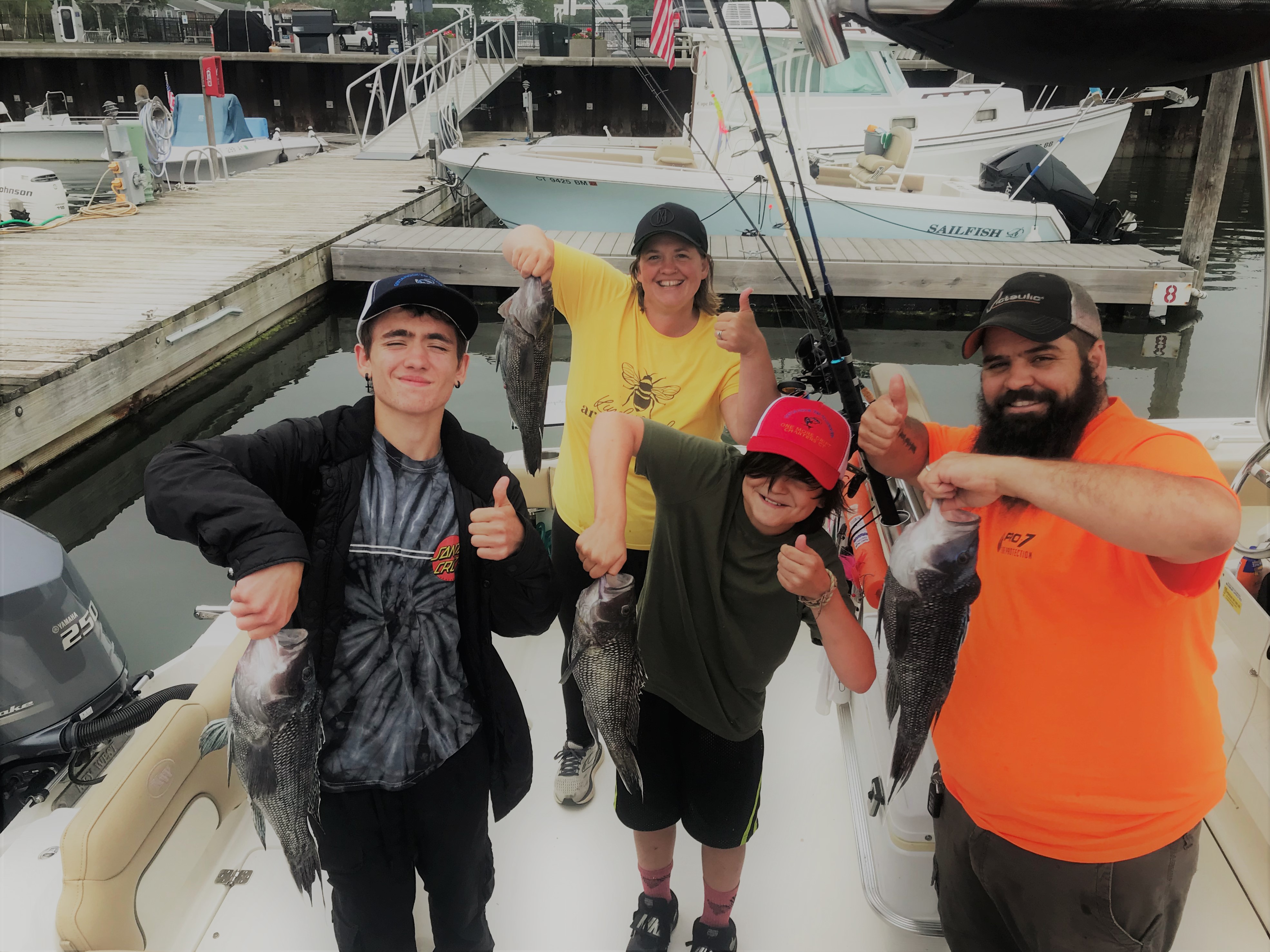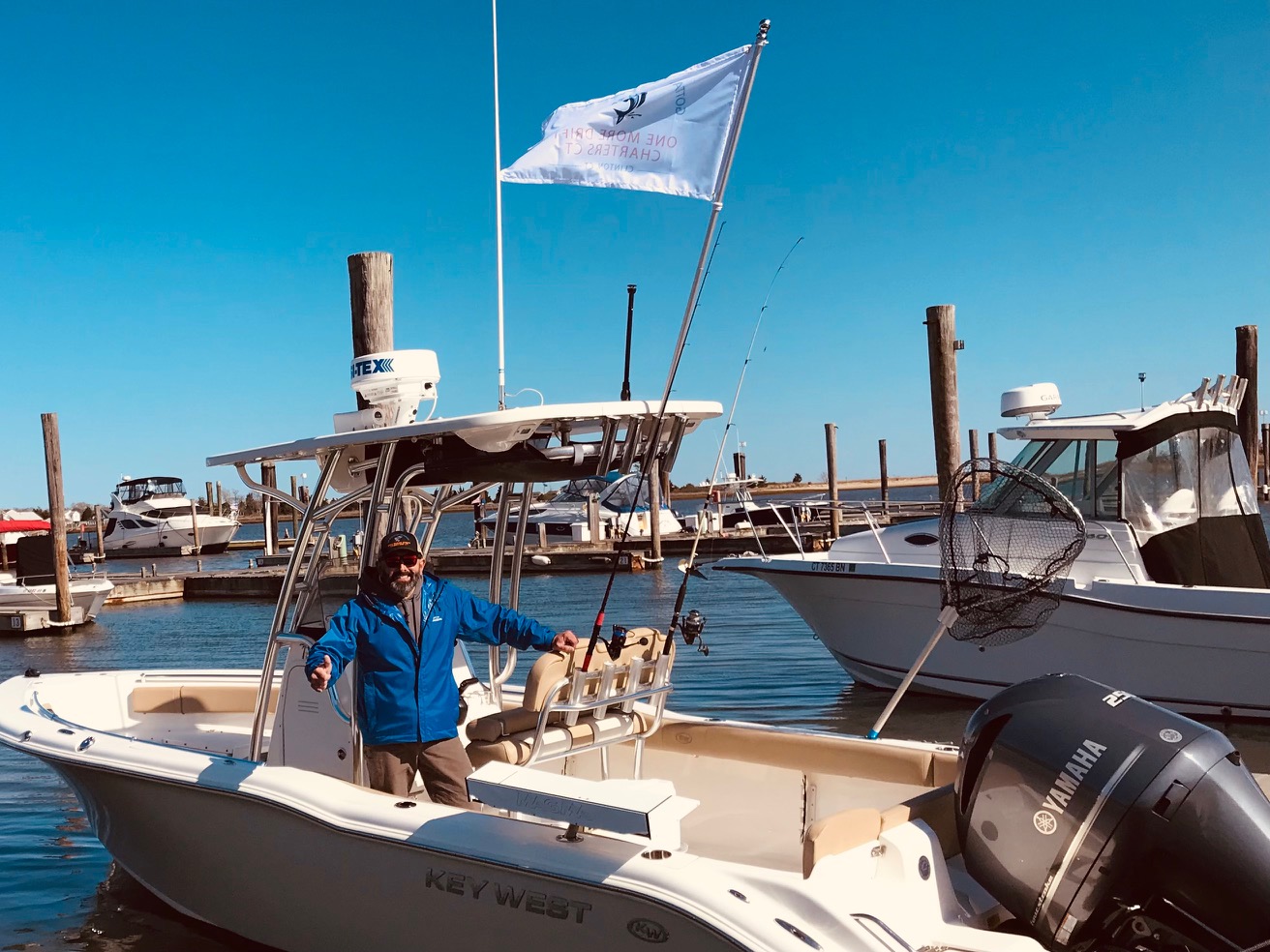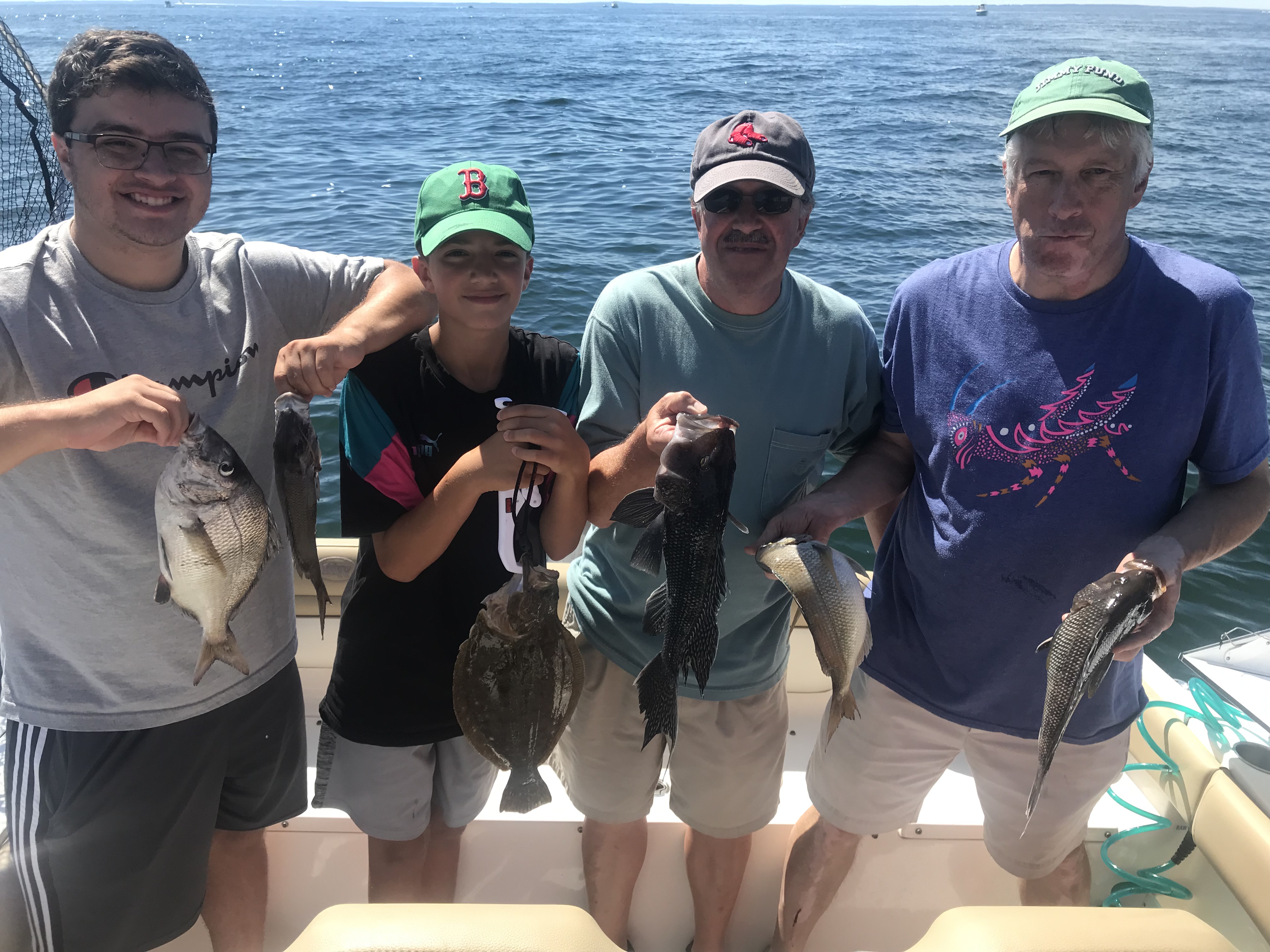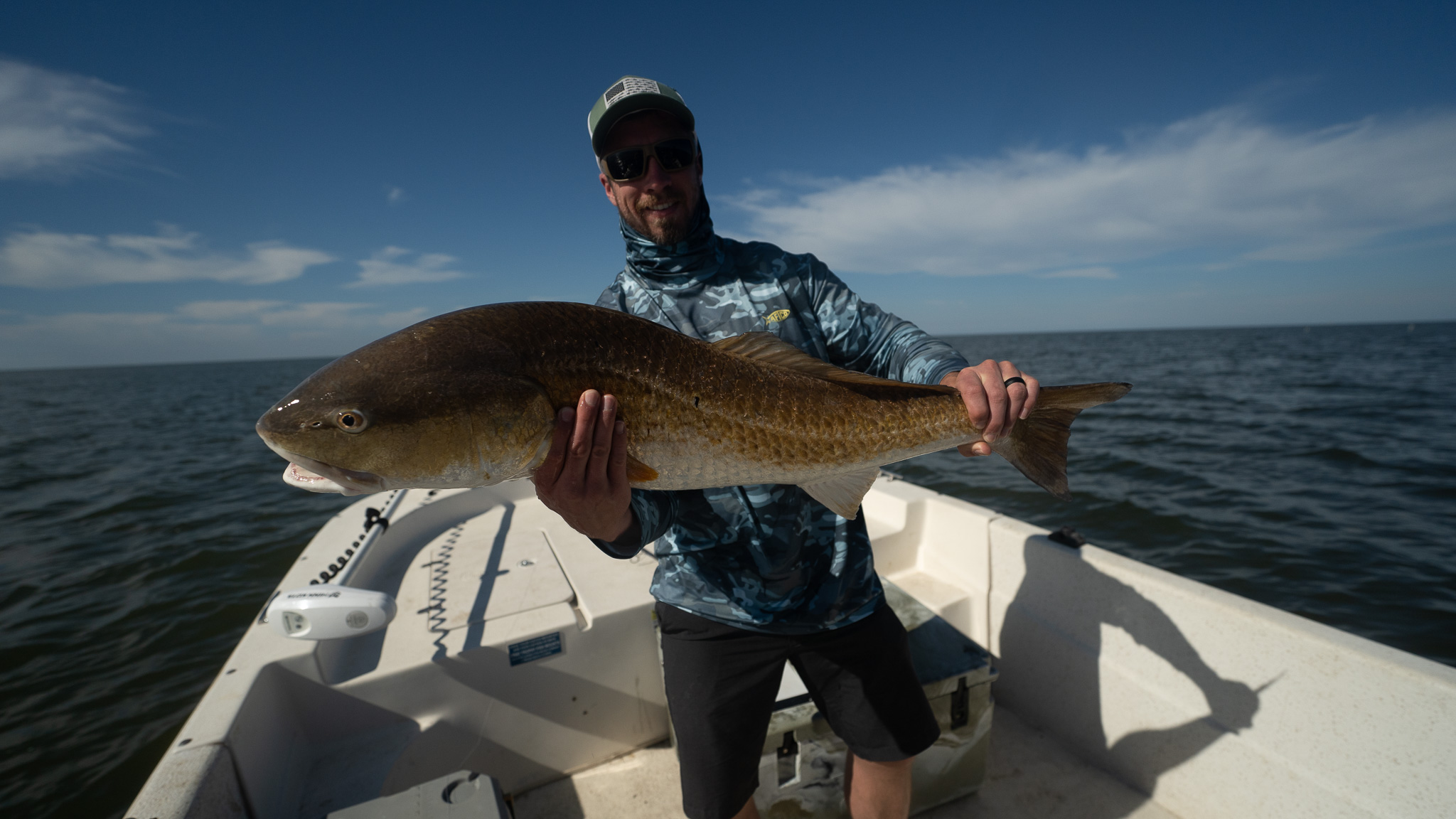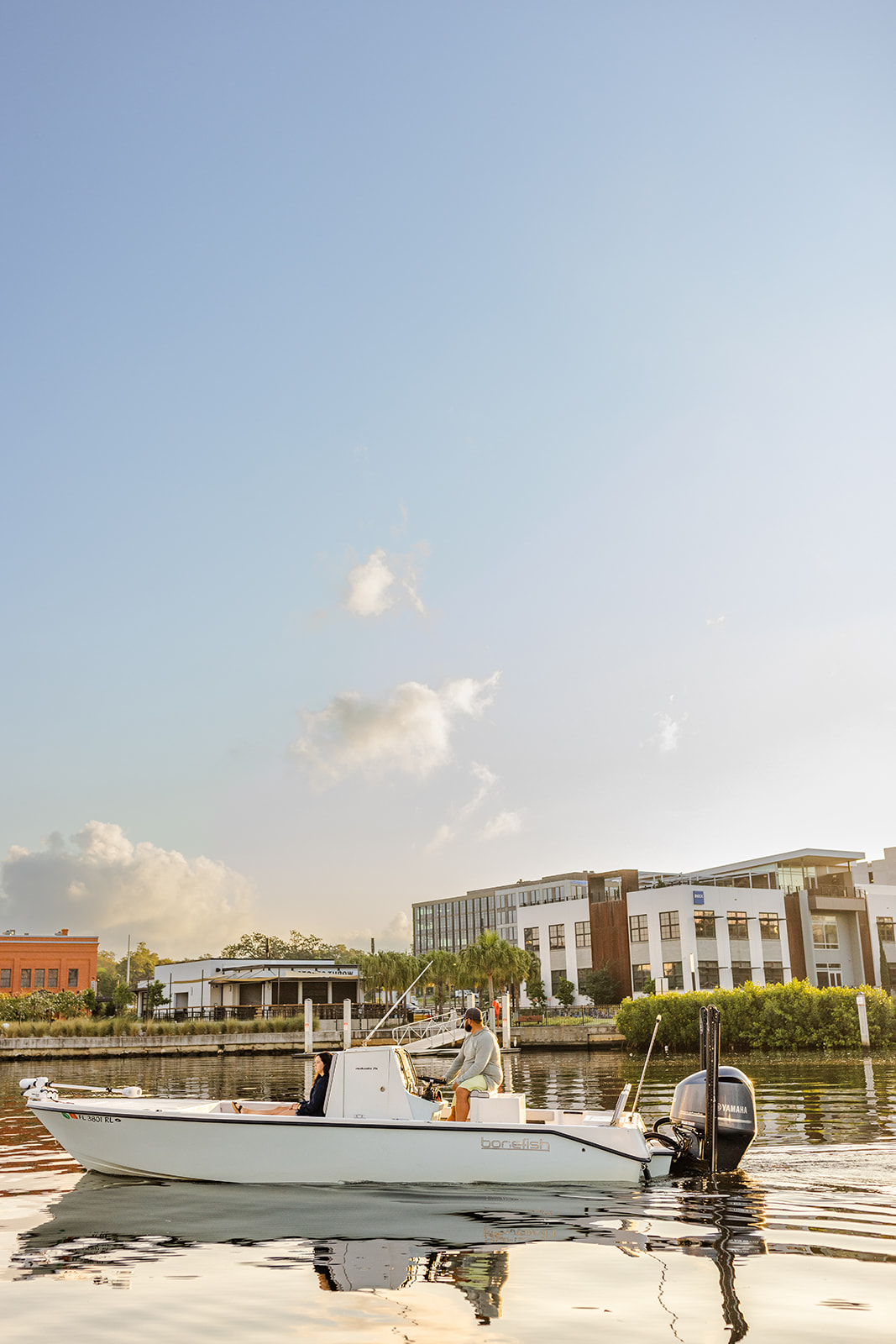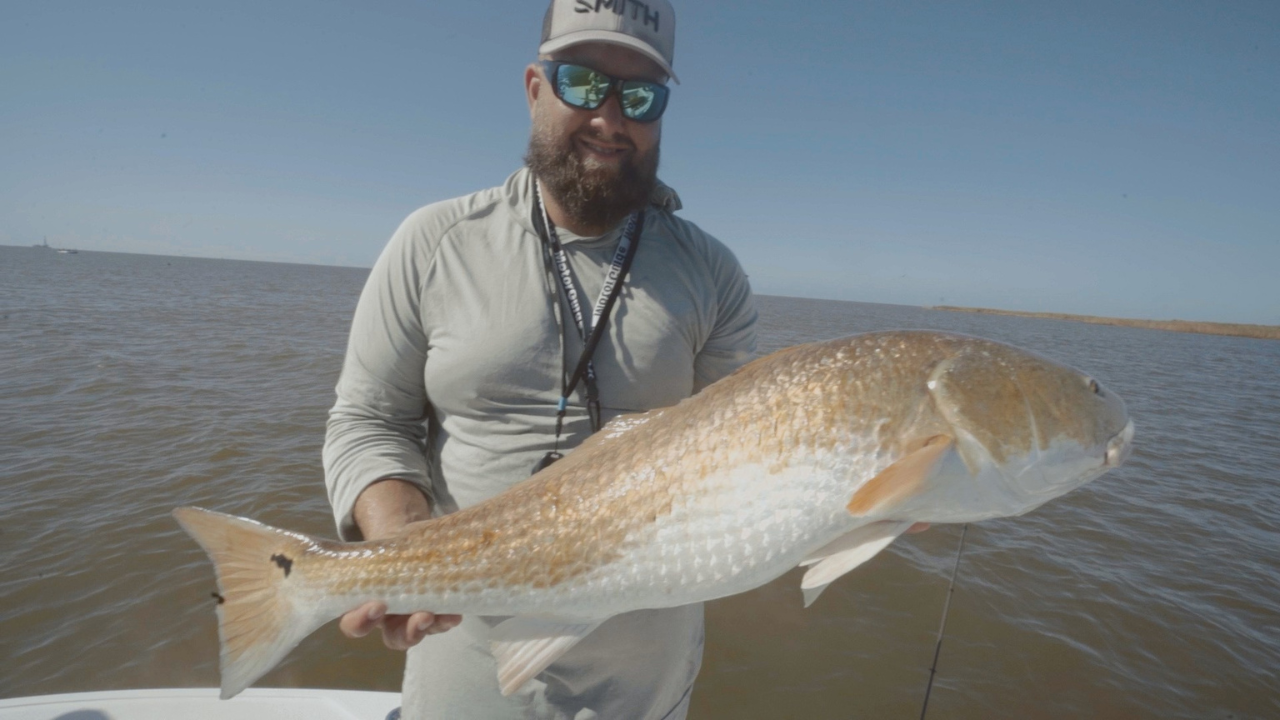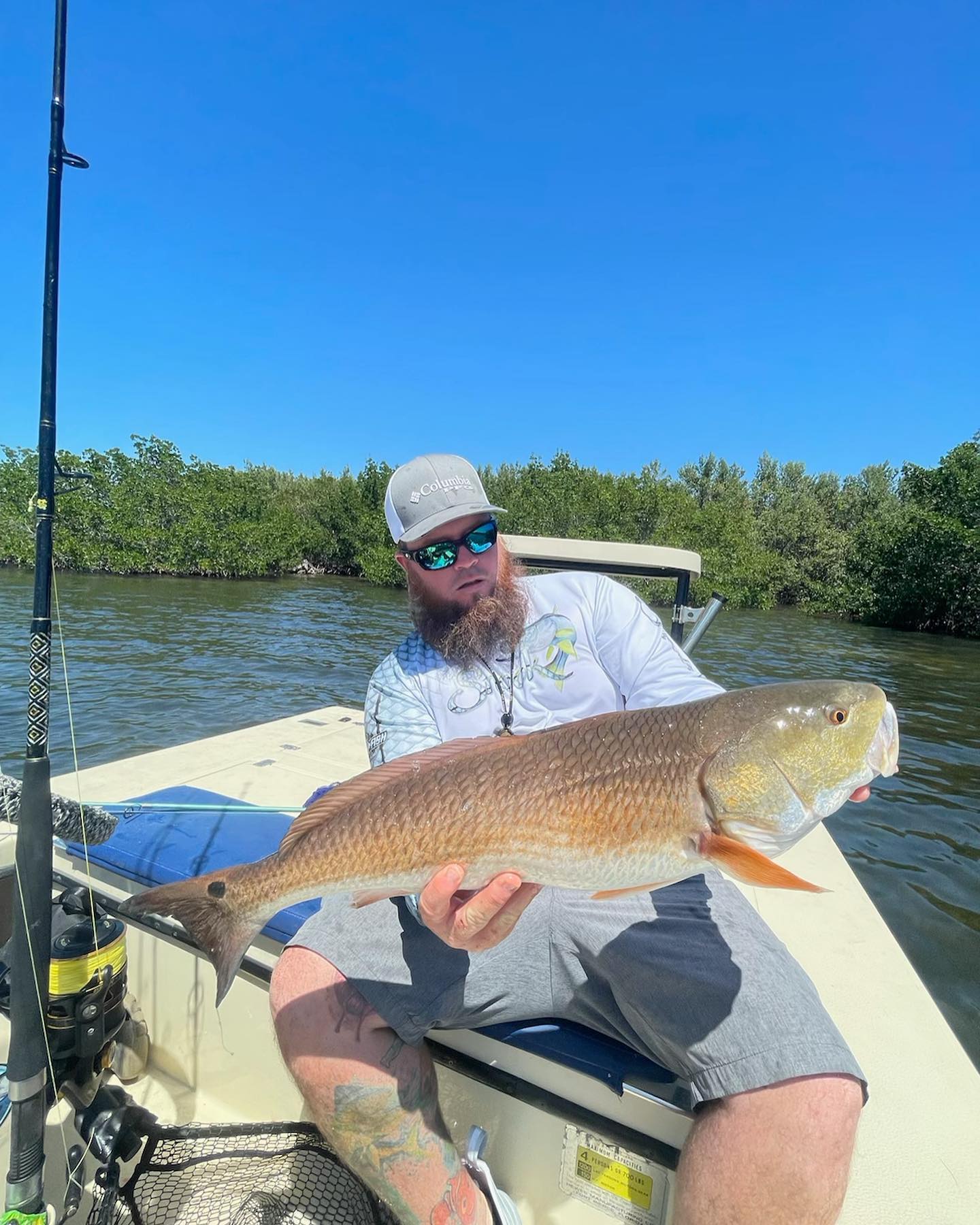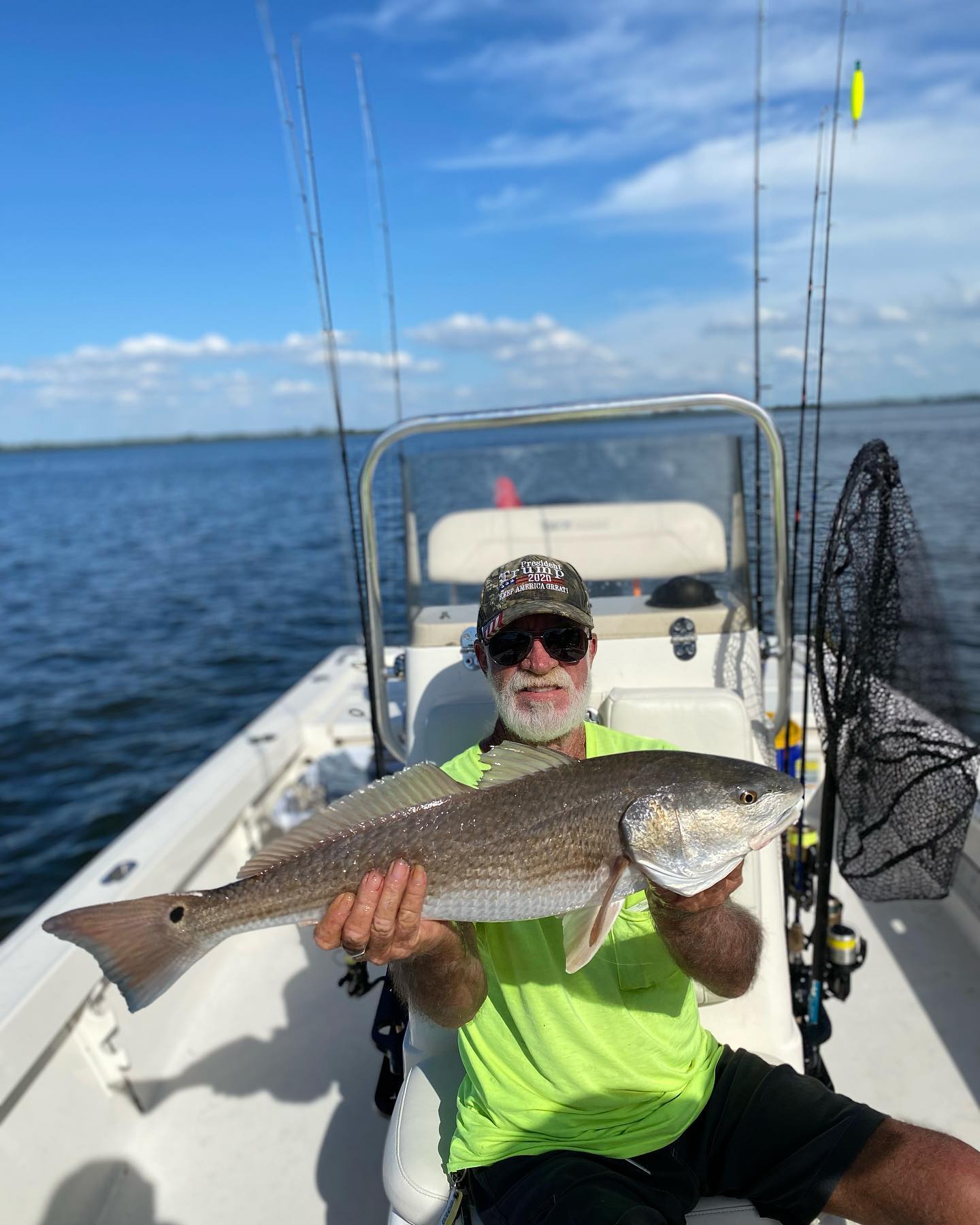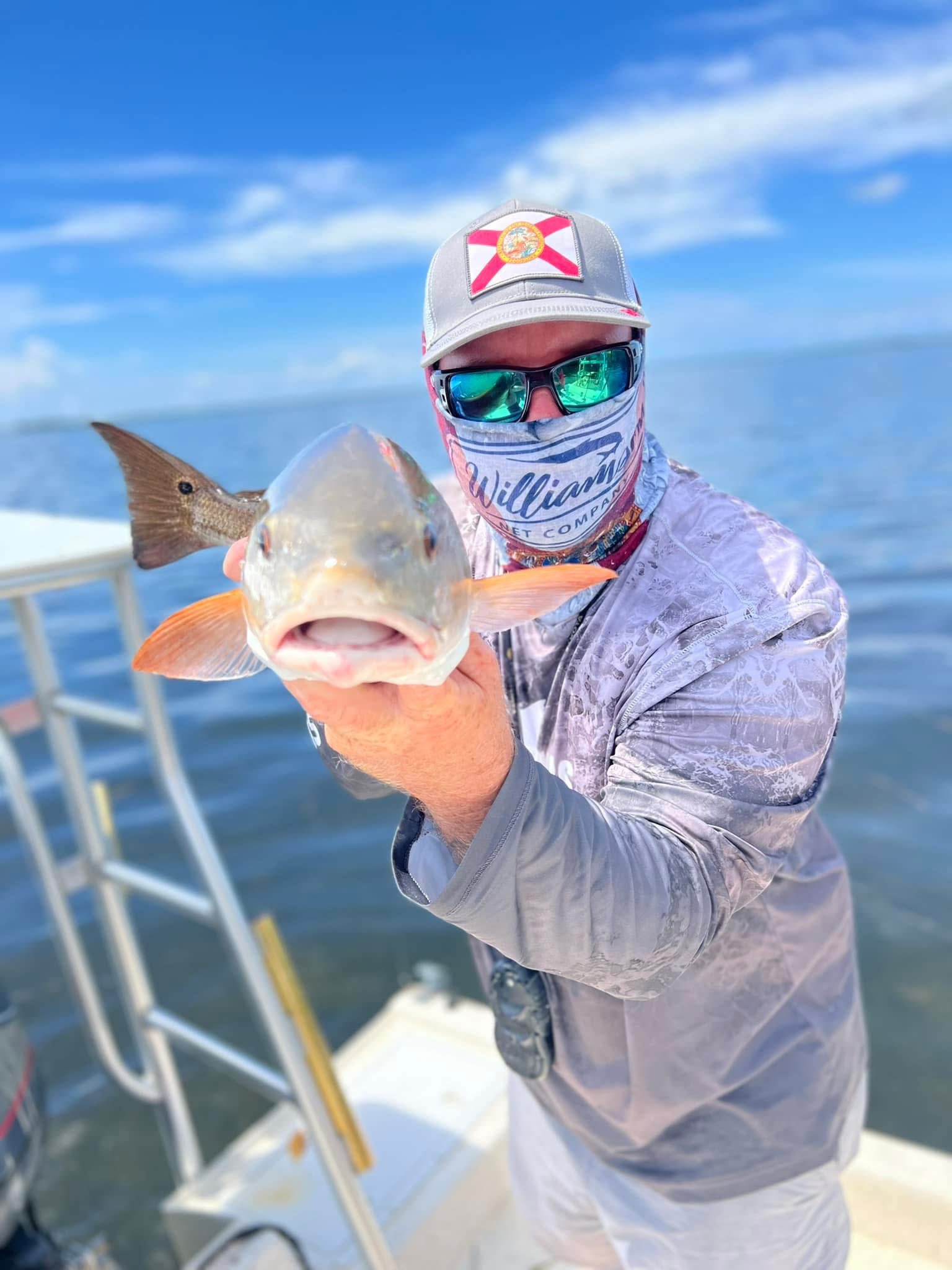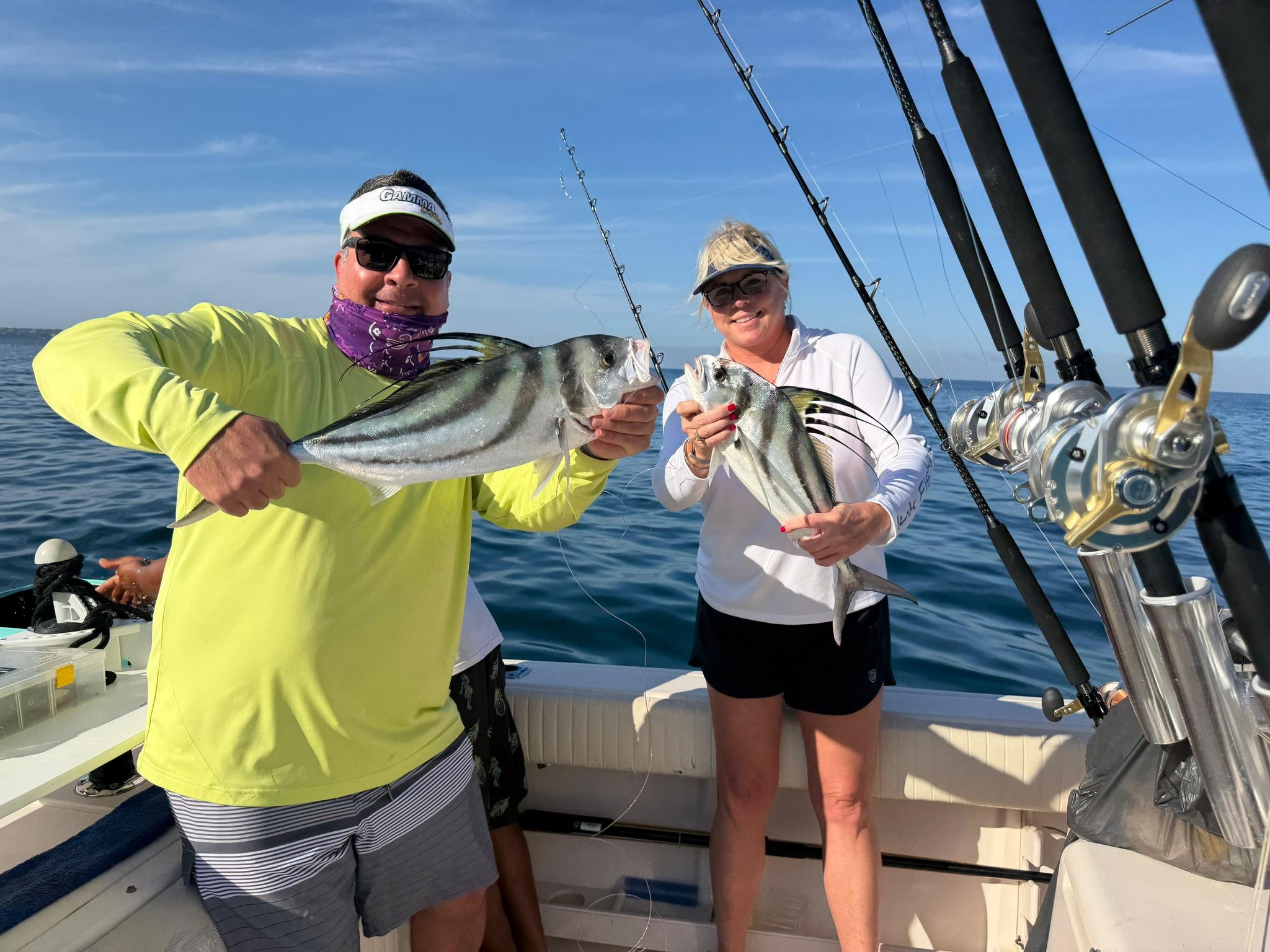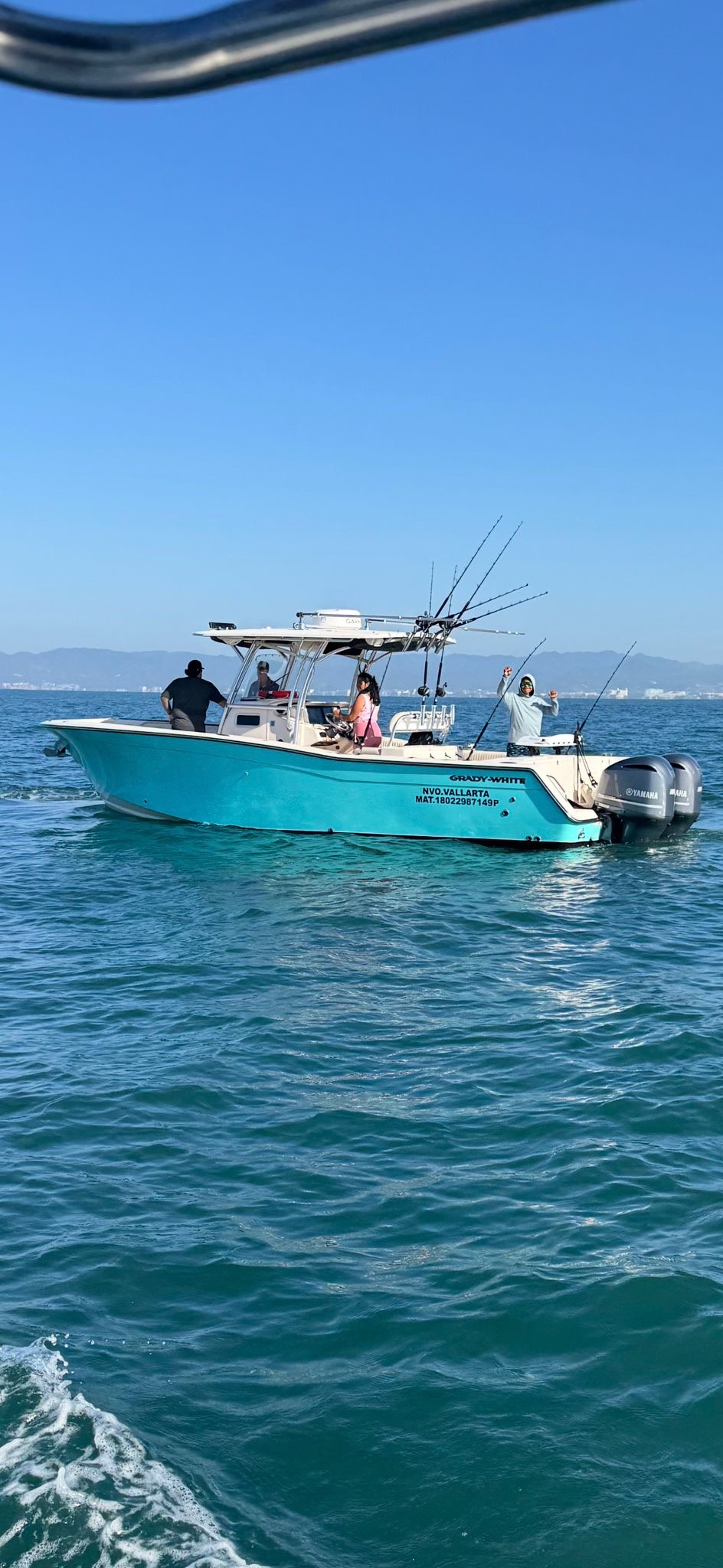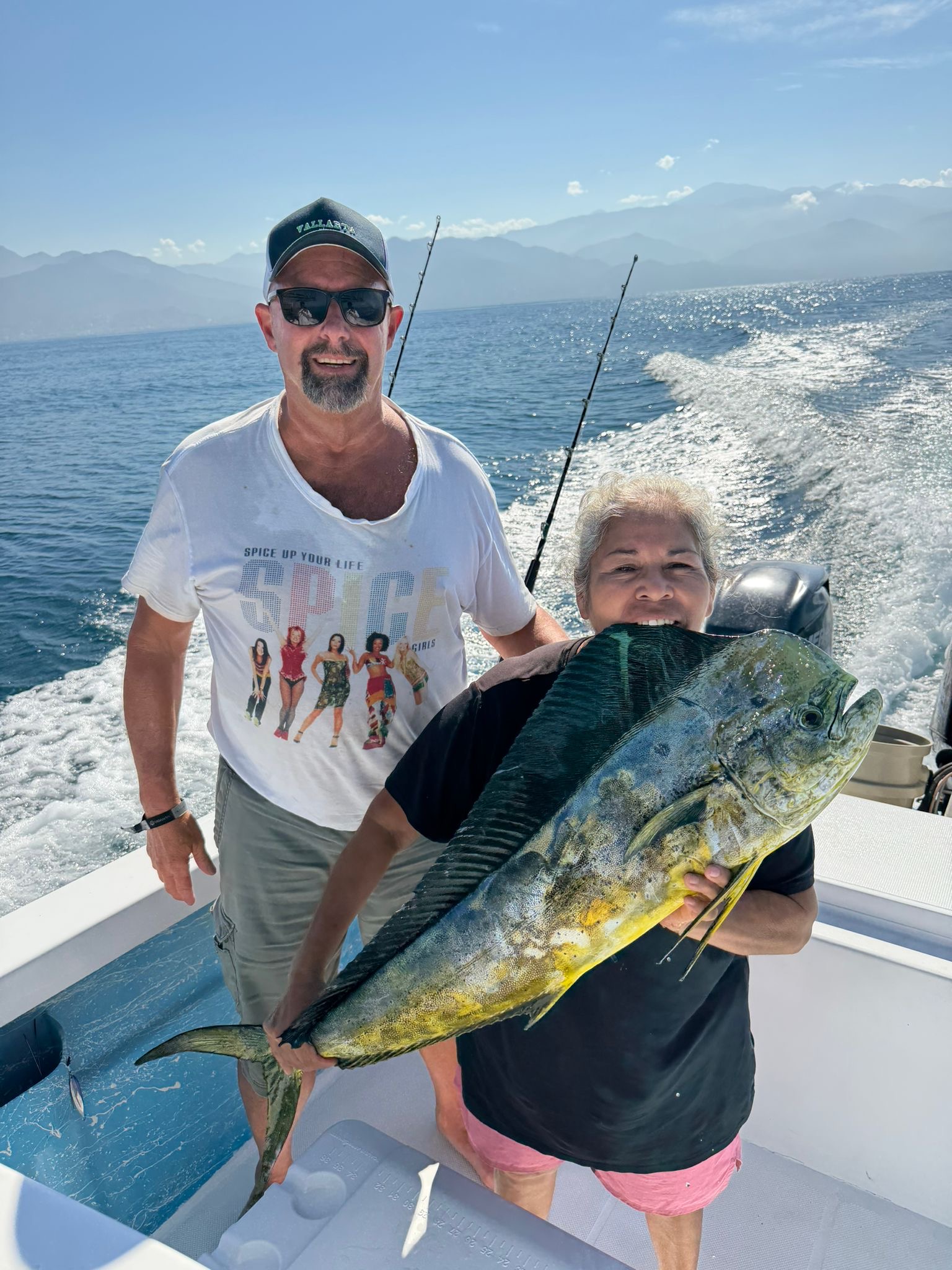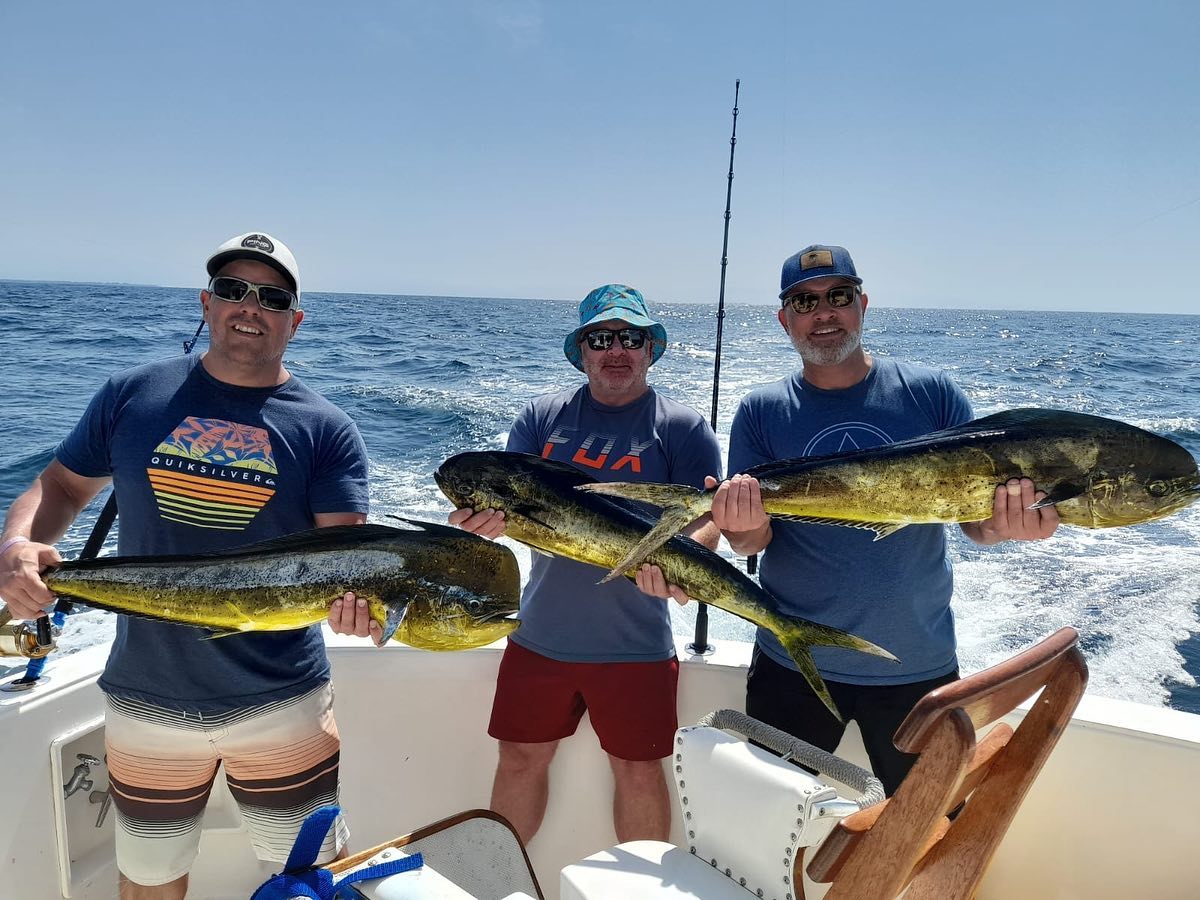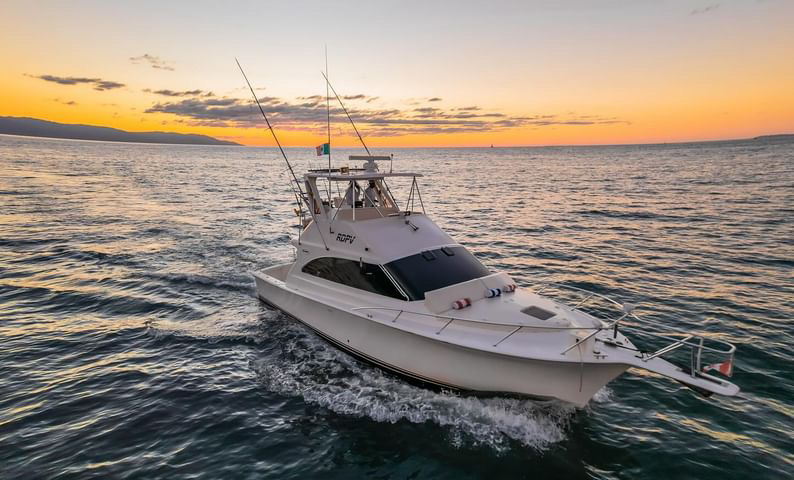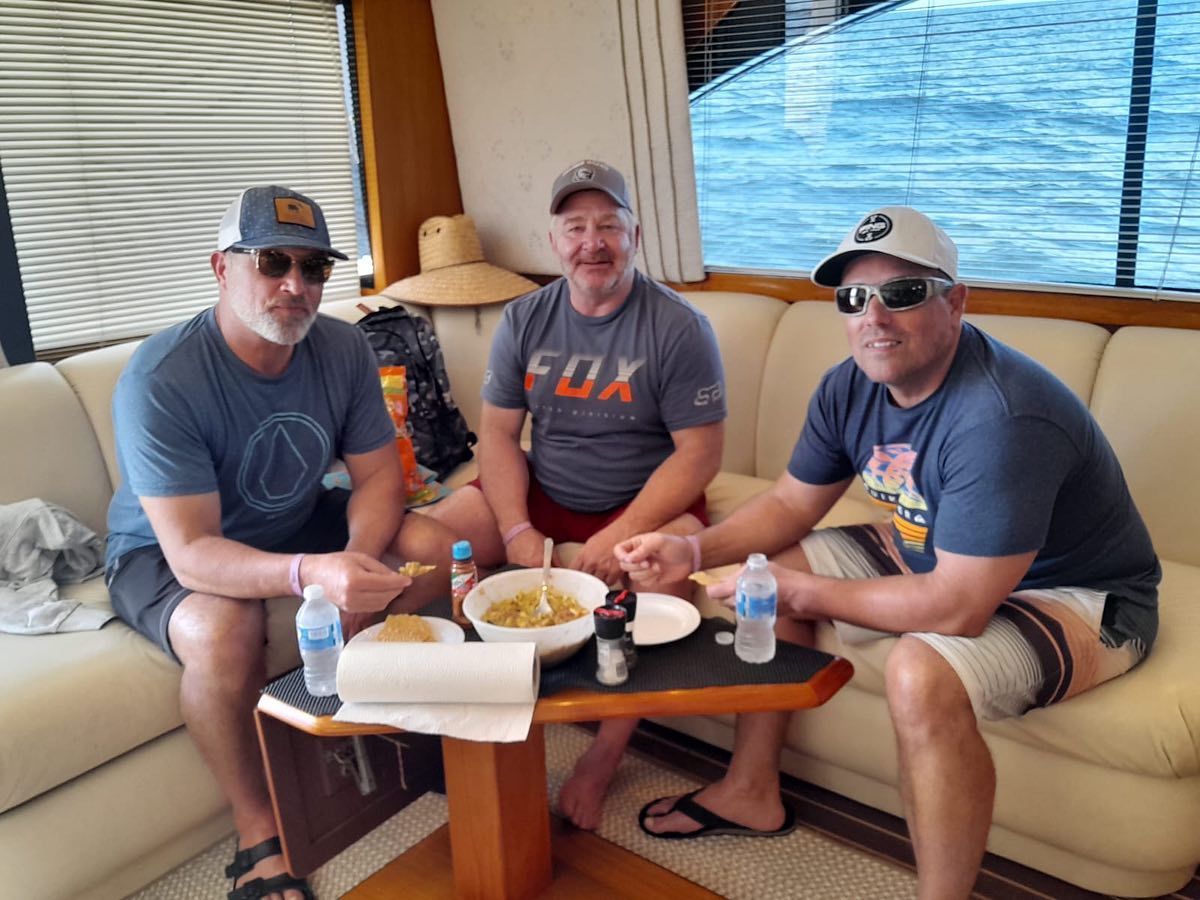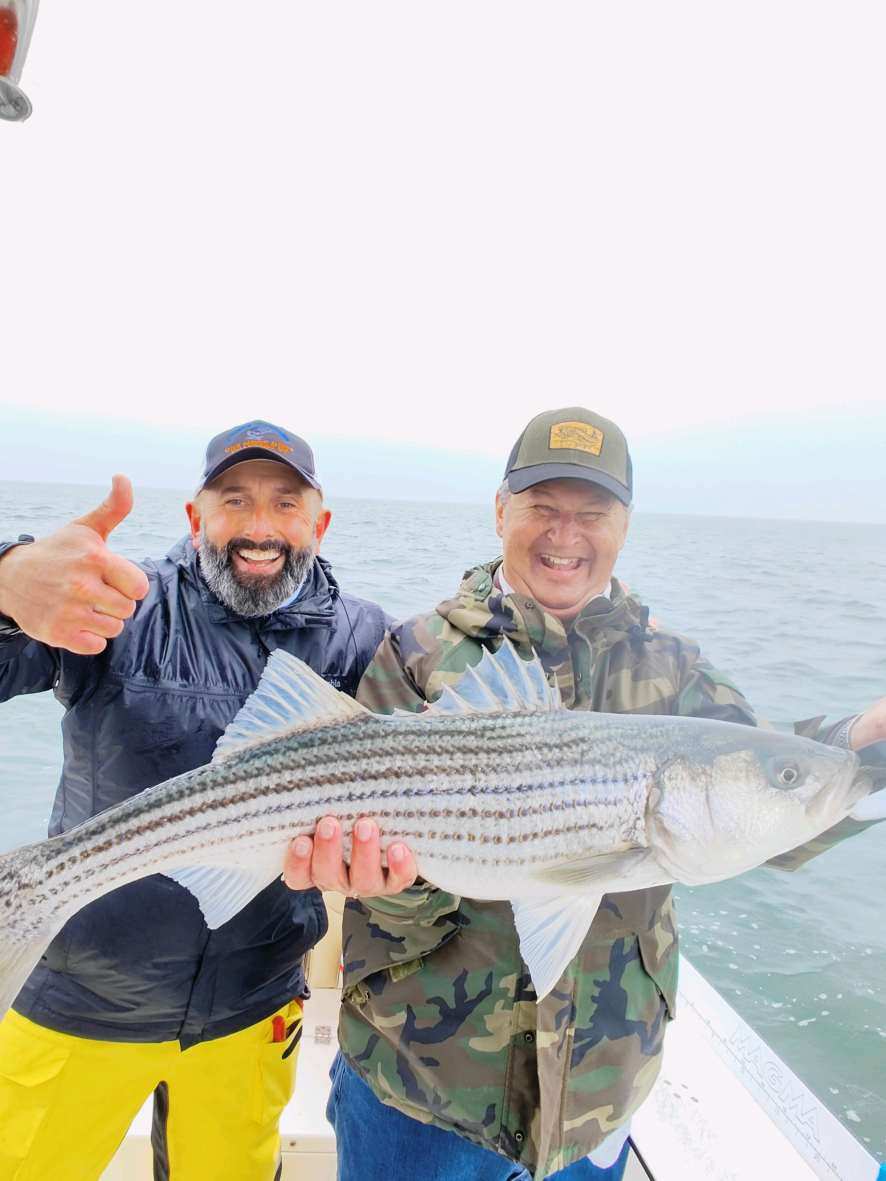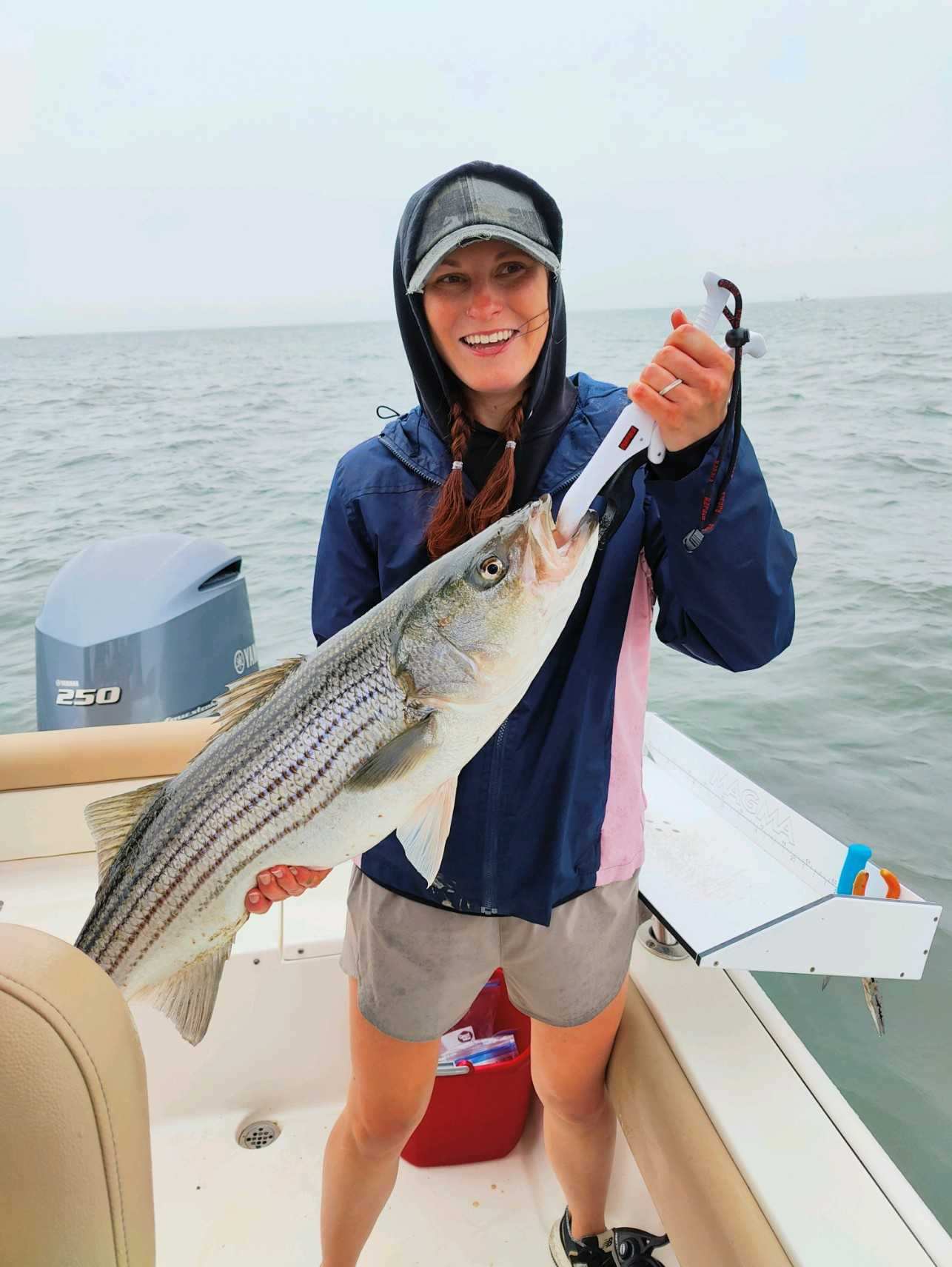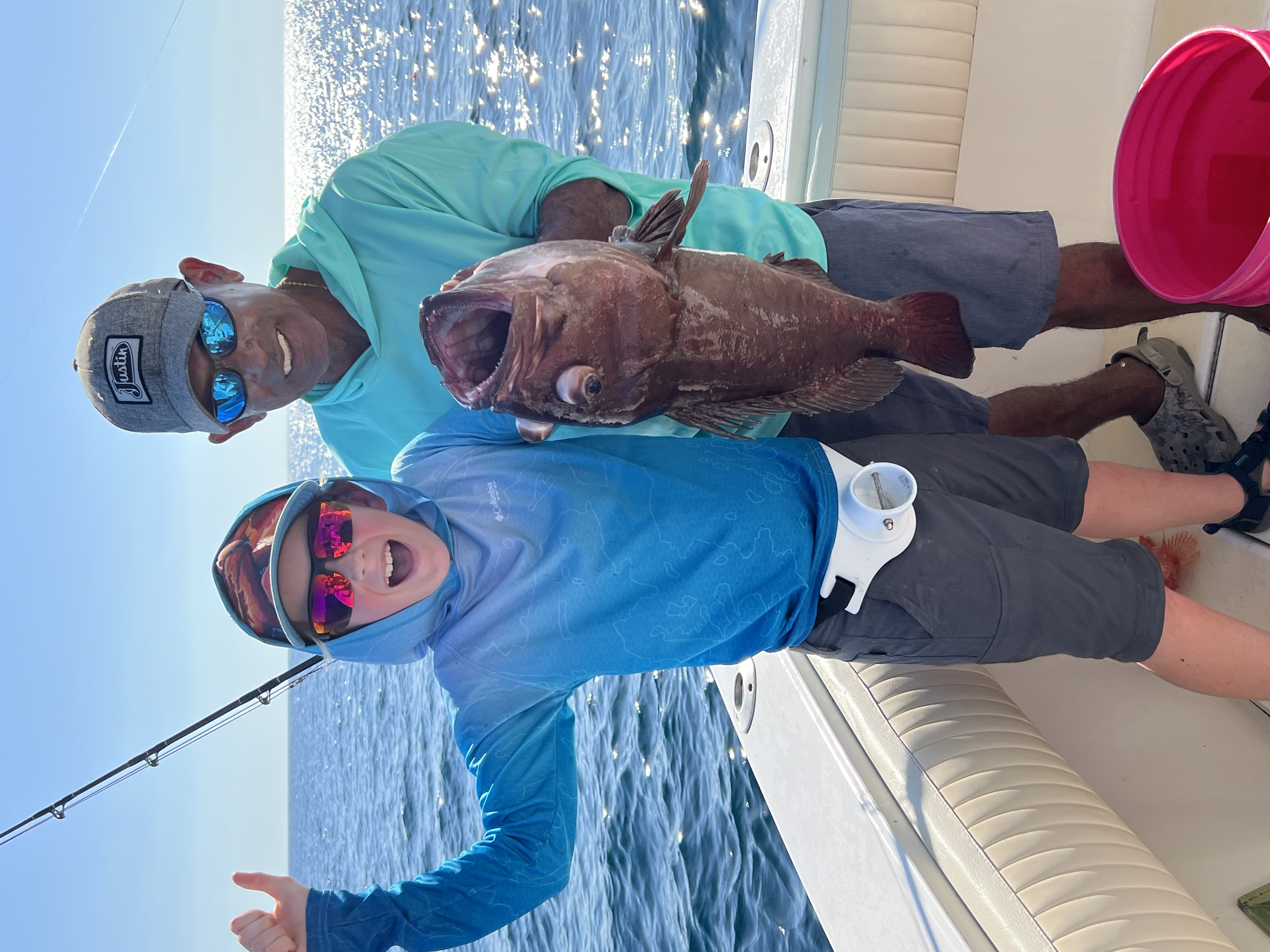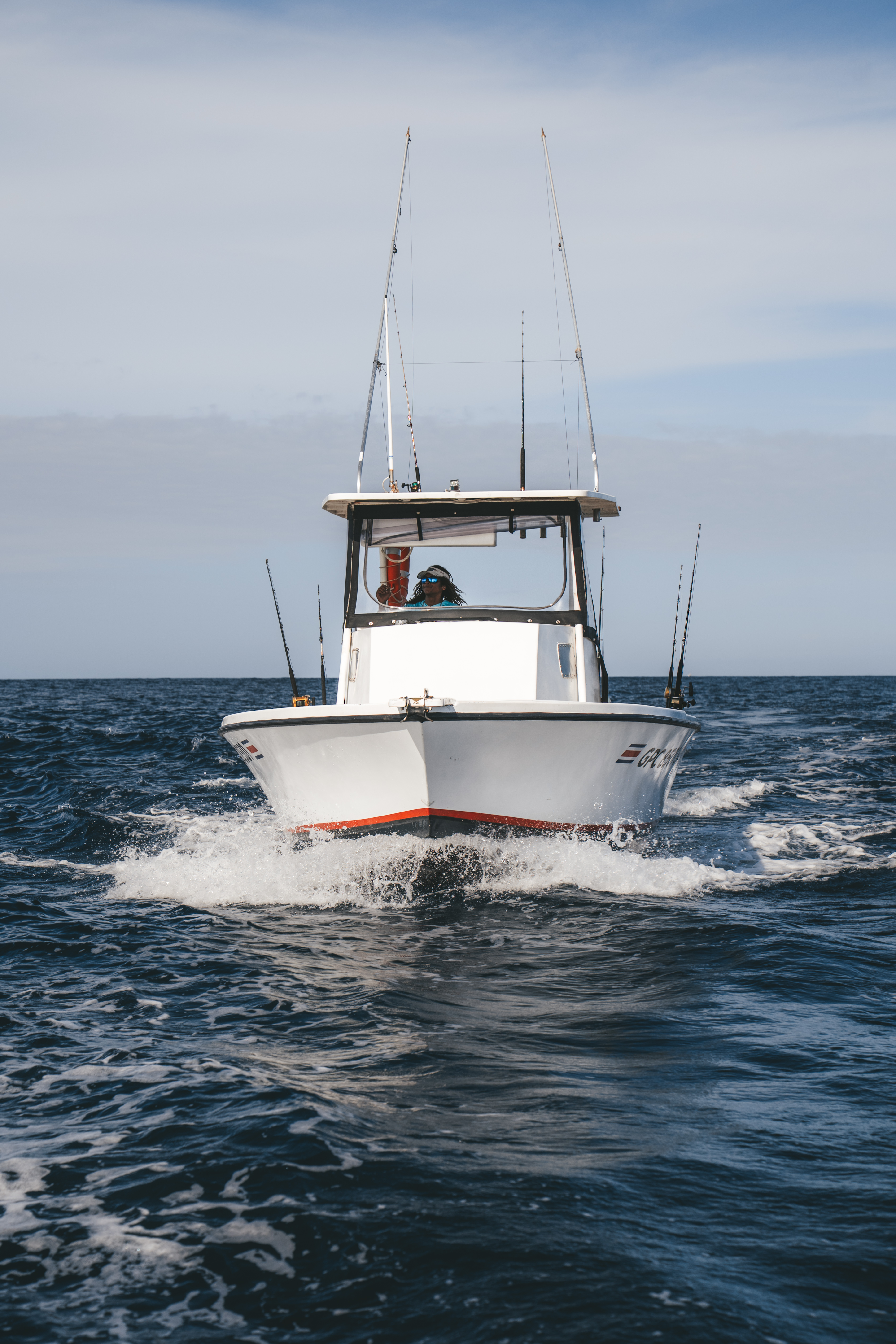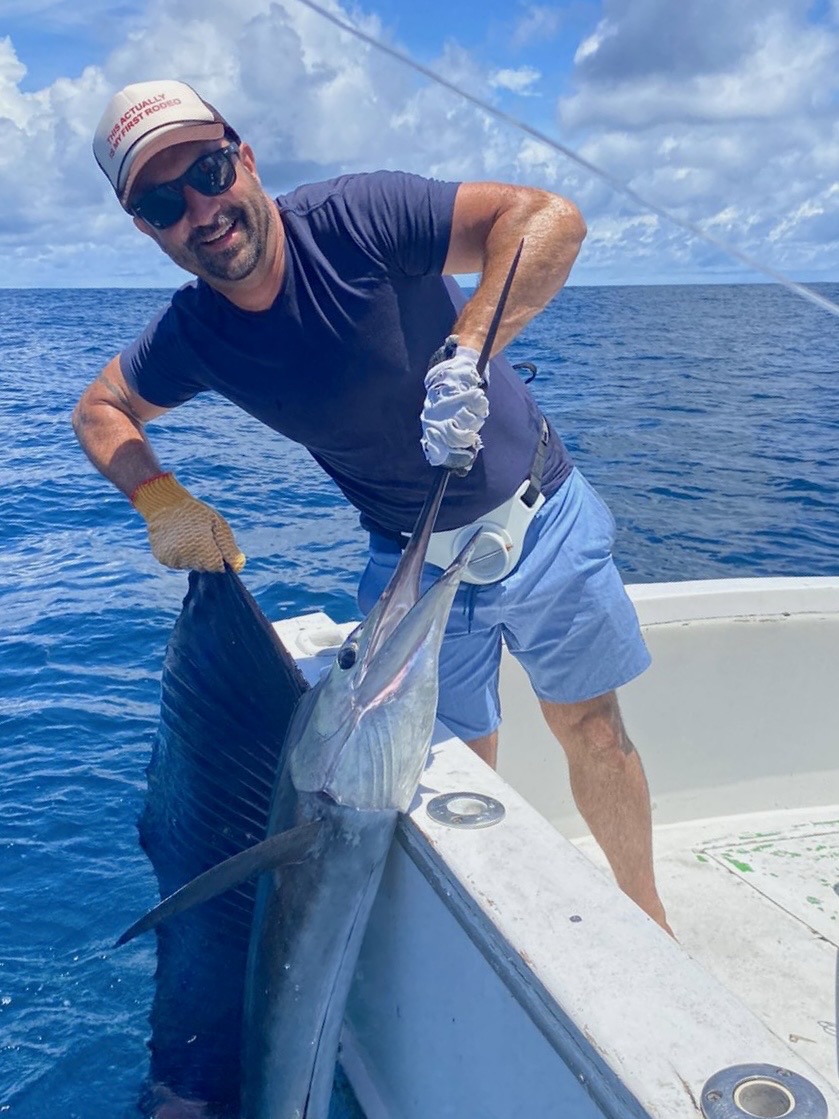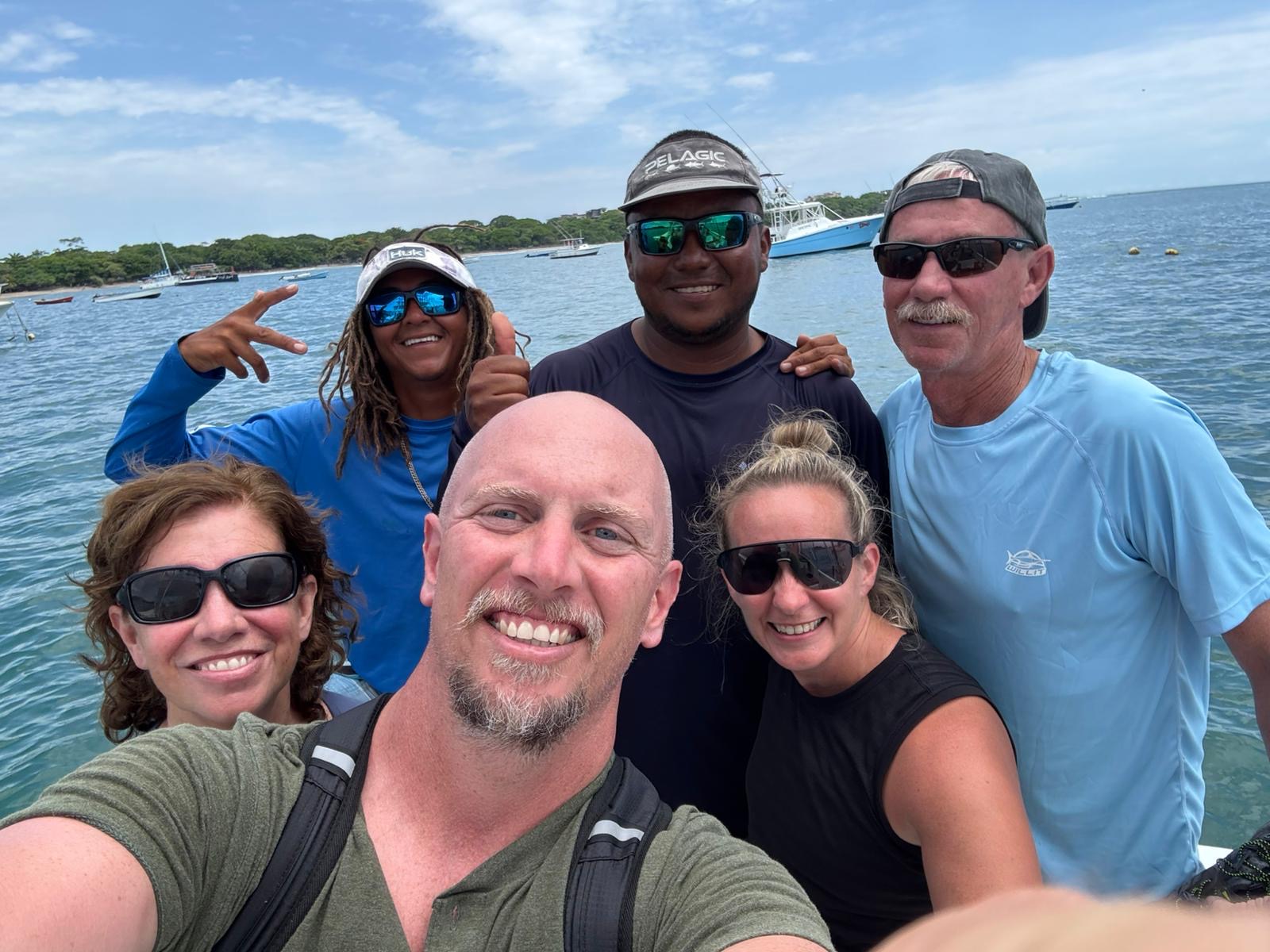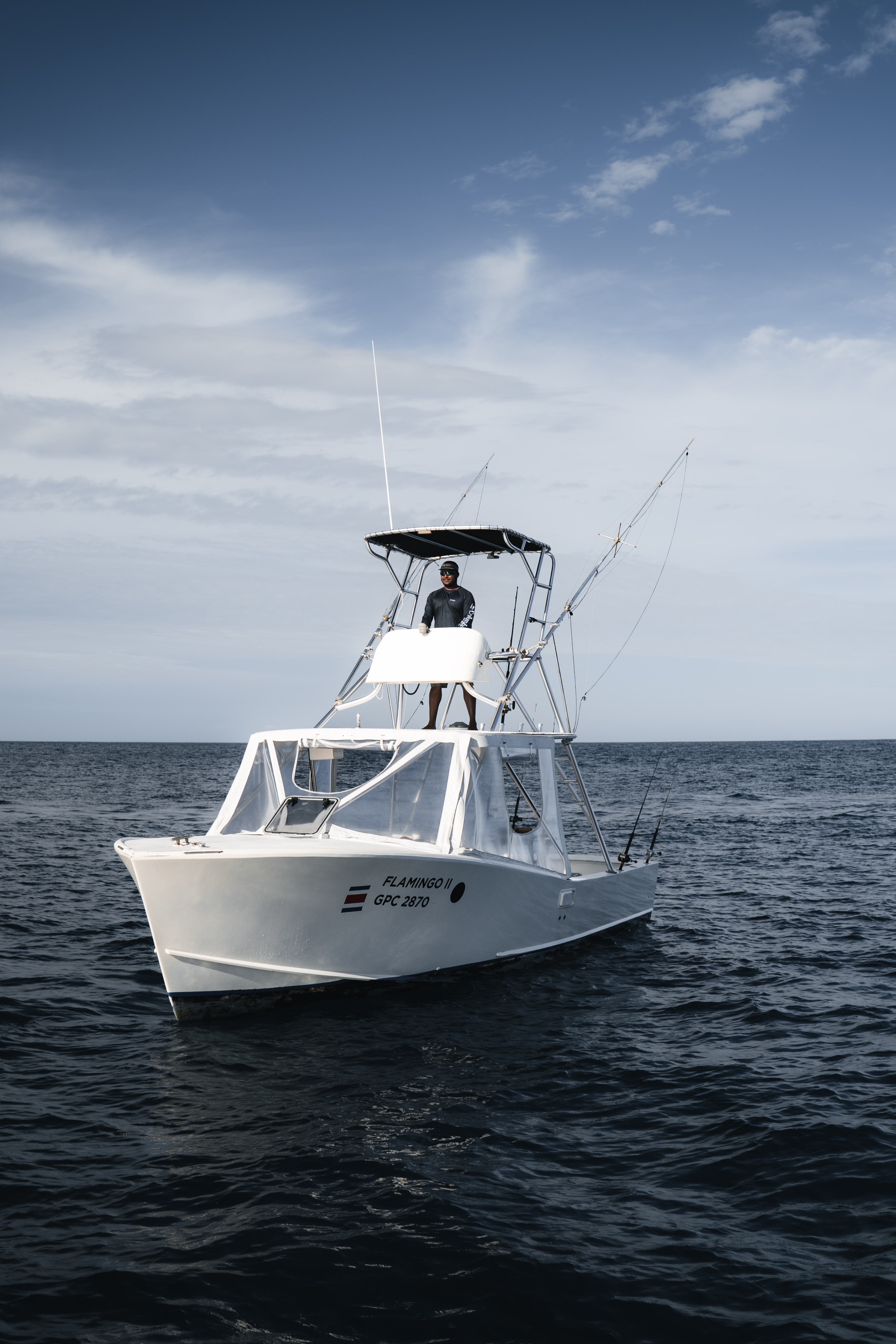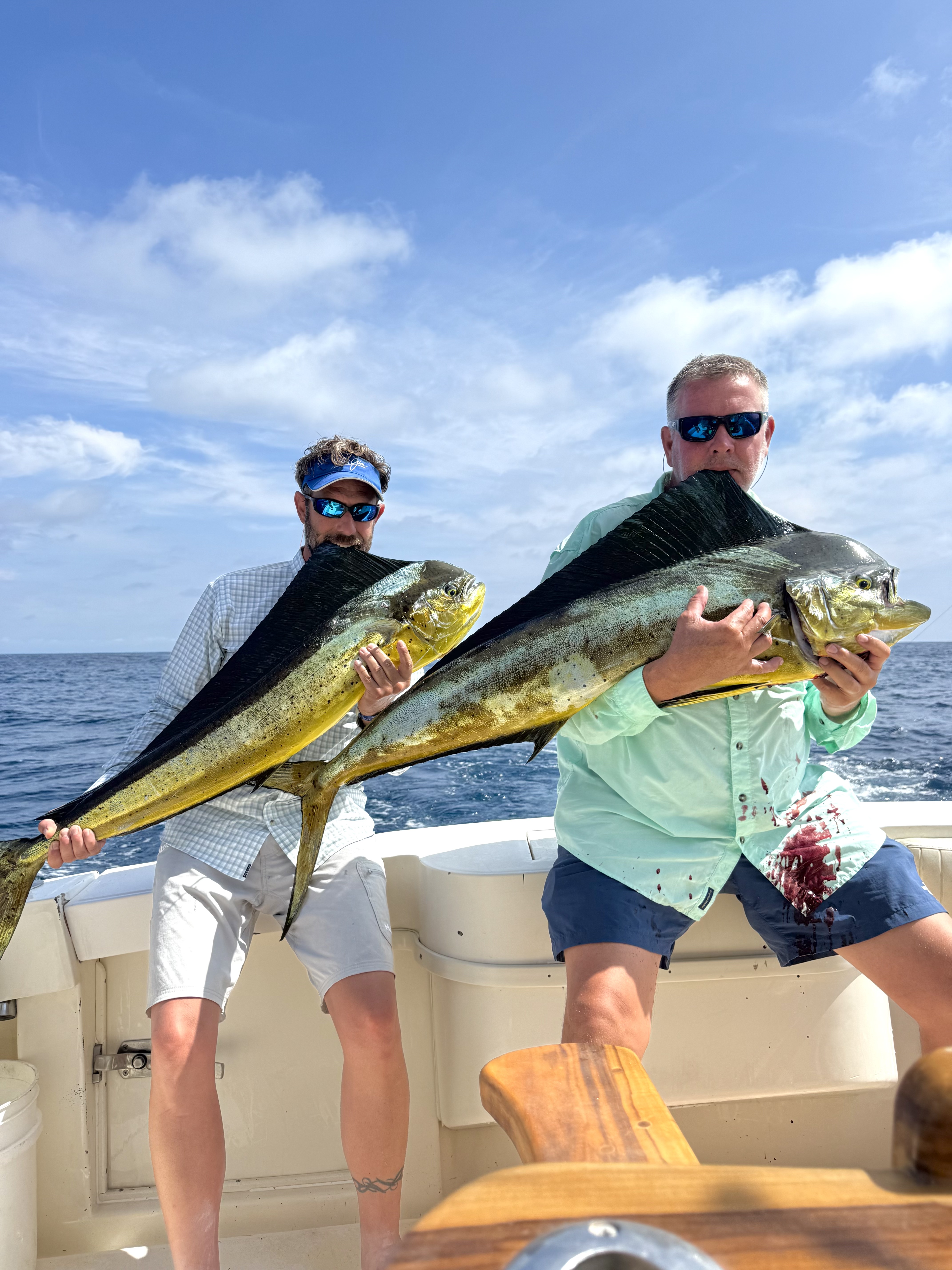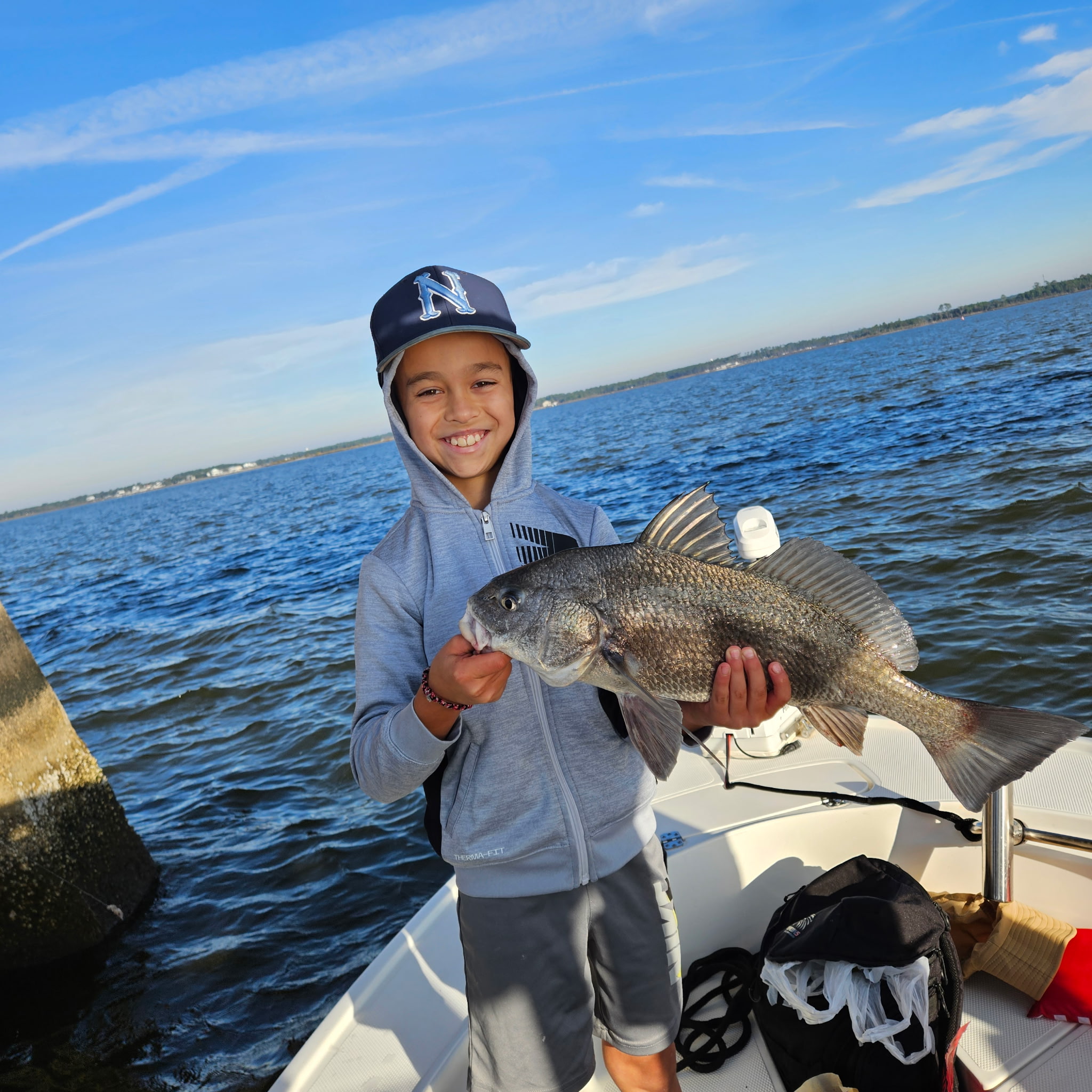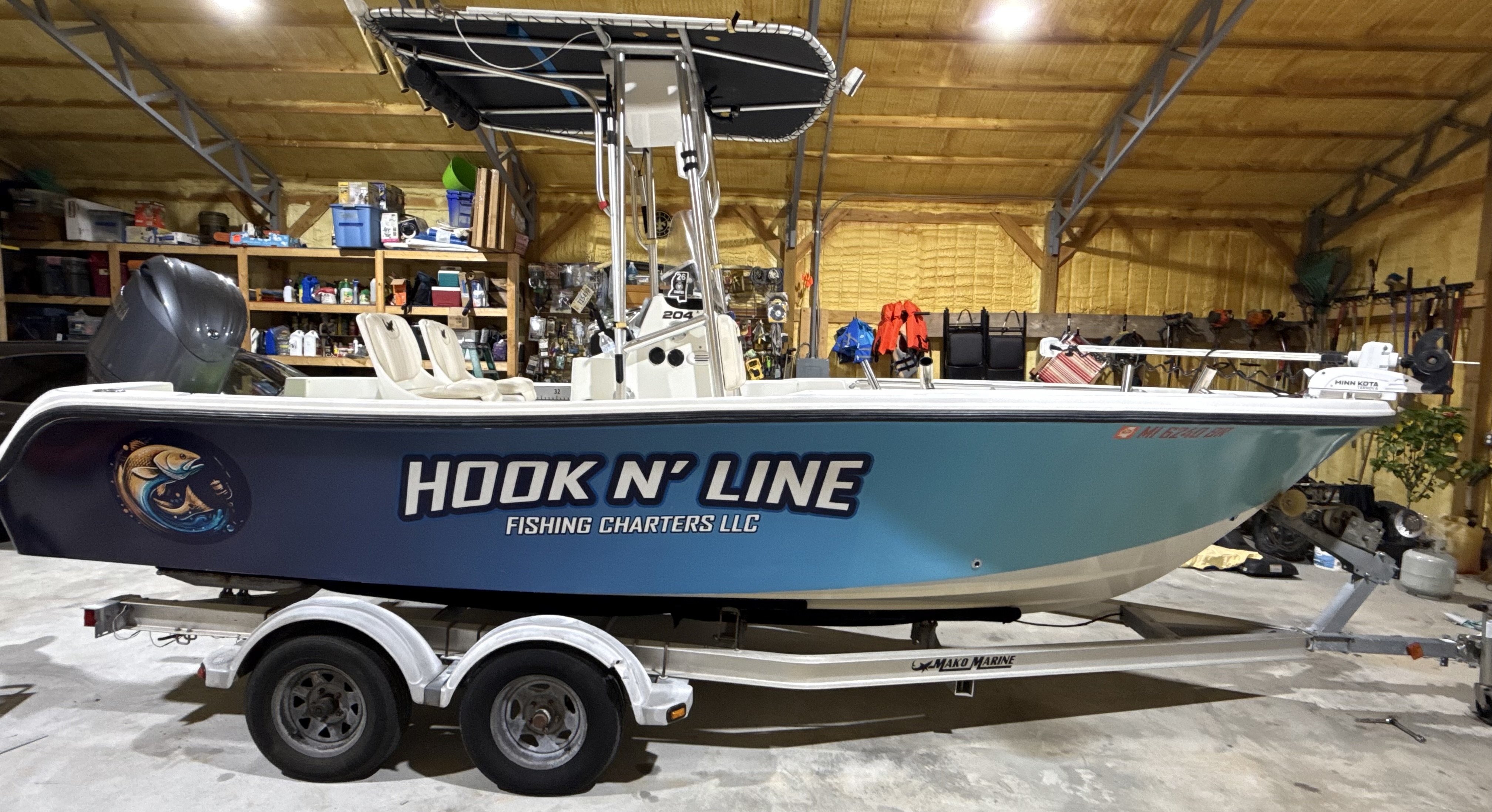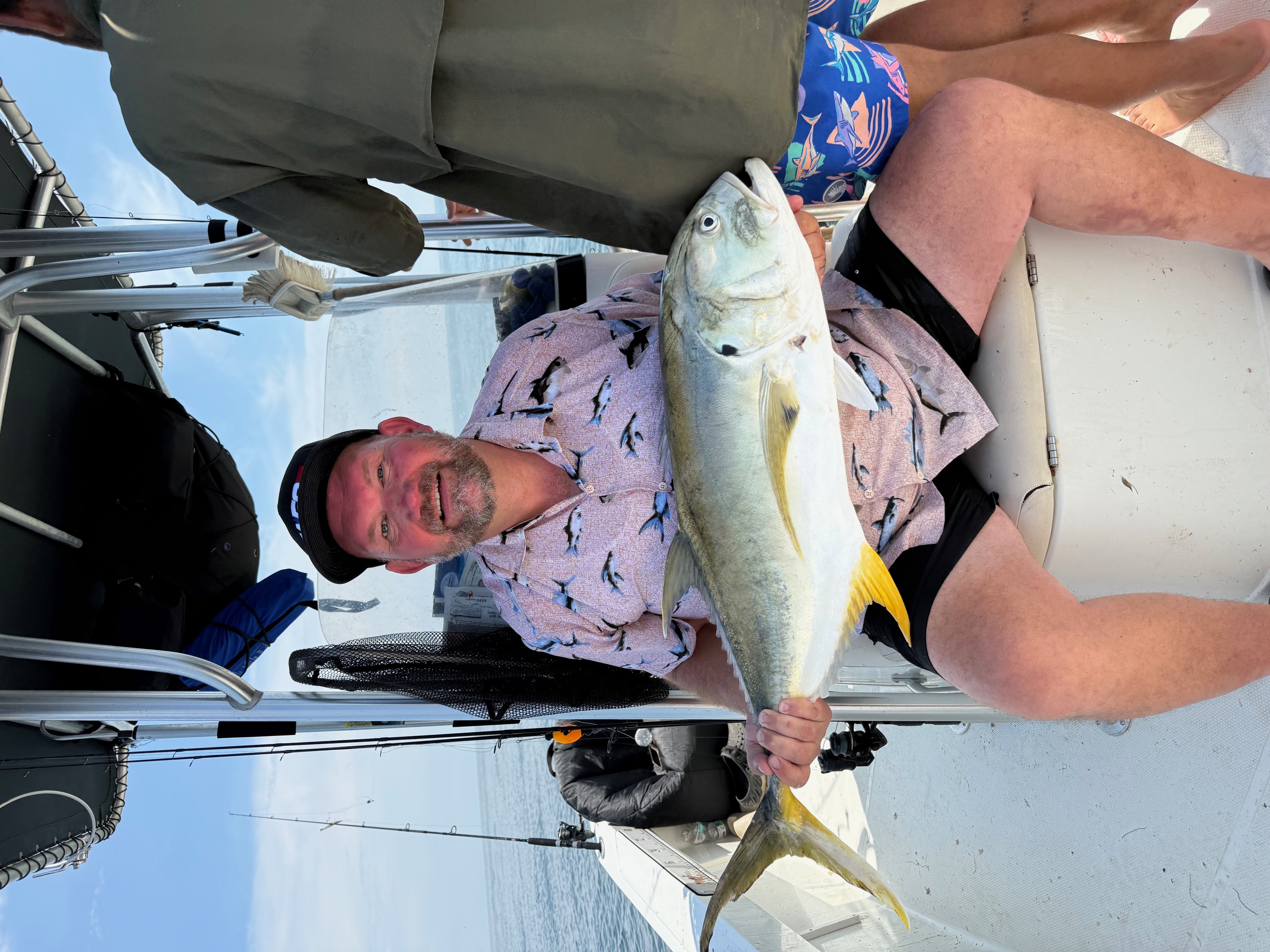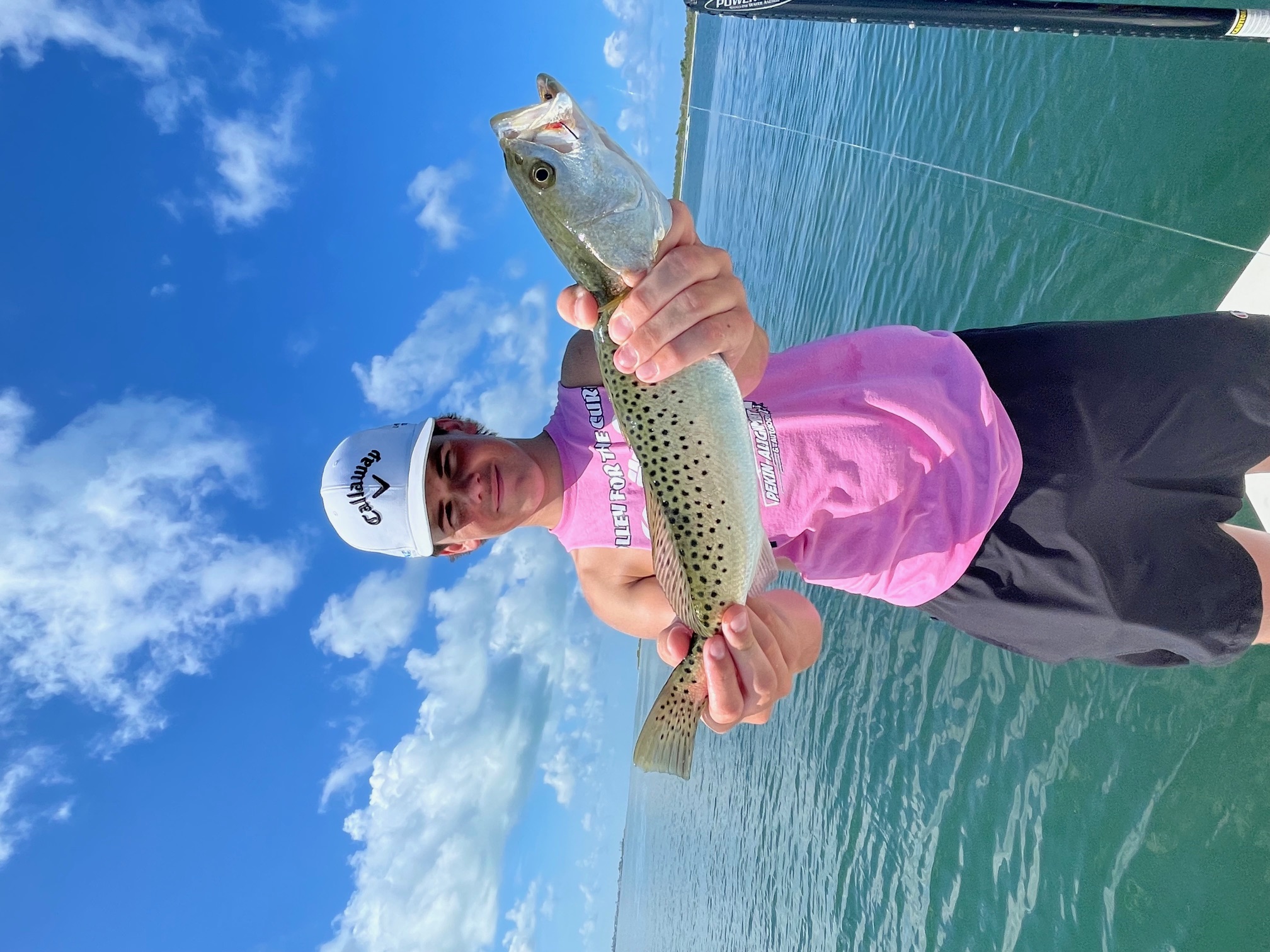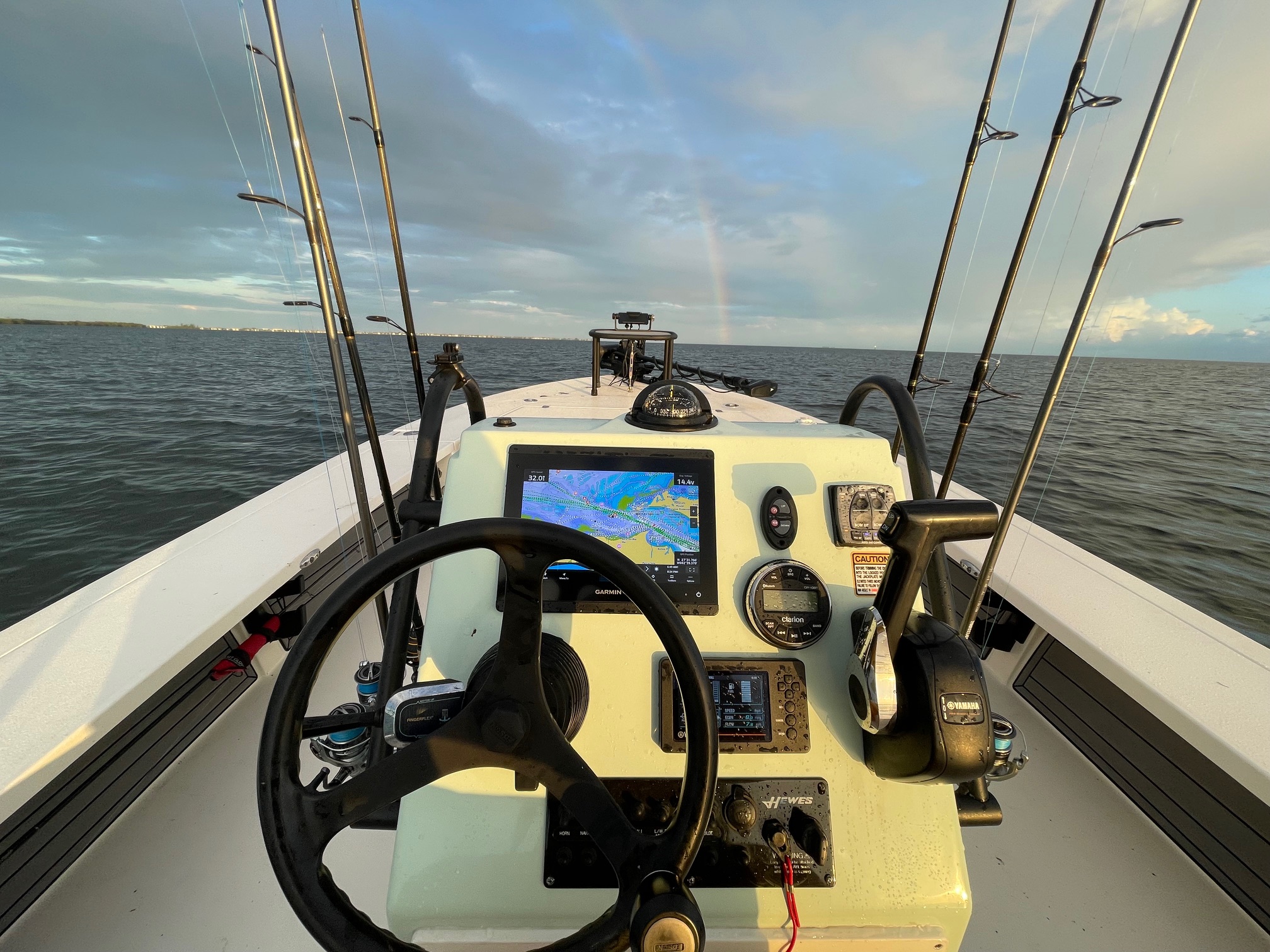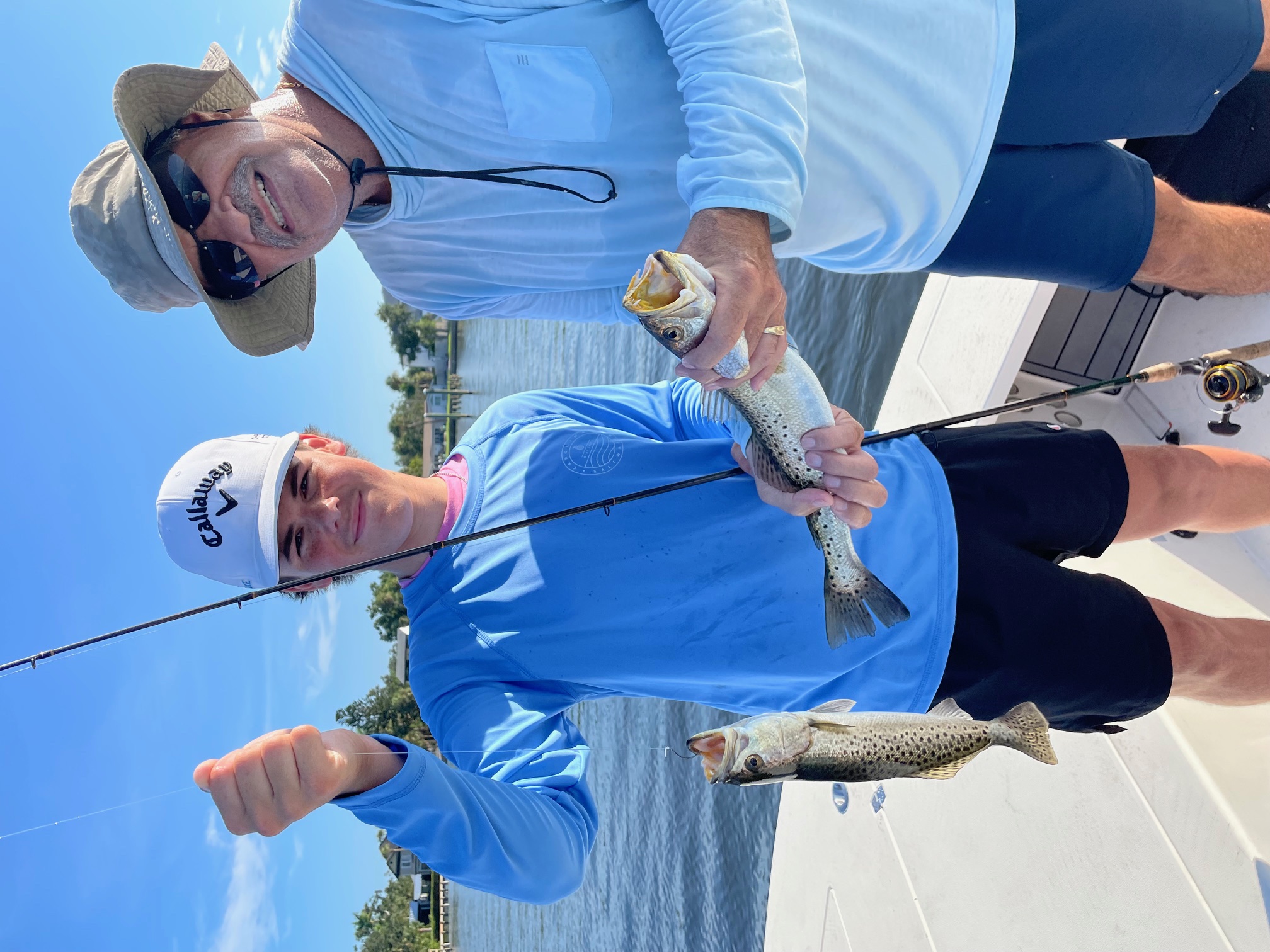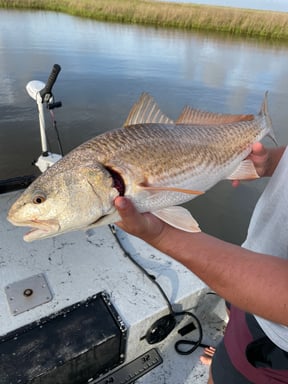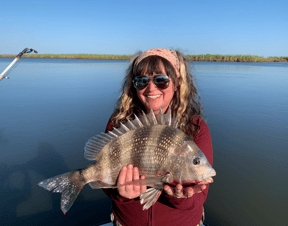Inshore, Nearshore Fishing in Clinton
3hr PM Trip Quick Fun Action
Venice Inshore Fishing Charter
Inshore, Flats Fishing in Bokeelia
Half Day Trip – Inshore
Inshore, Deep Sea Fishing in Puerto Vallarta
31 Ft Grady White Half Day
Inshore, Deep Sea Fishing in Cruz de Huanacaxtle
Luxury 40 Ft Yacht La Cruz
Inshore, Nearshore Fishing in Clinton
5HR Trip PM Bottom/ Reef
Inshore, Deep Sea, Nearshore in Tamarindo
27’ Budget-Friendly Fishing
Inshore, Deep Sea, Nearshore in Tamarindo
31-Foot Gamefish Power Run
Inshore, Nearshore, Flats in Biloxi
Inshore/Nearshore Fishing Charters!
Inshore Fishing in Holmes Beach
6 Hour Inshore Fishing - Anna Maria
We started Captain Experiences to make it easy to book fishing and hunting guides around the world. With over 2,000 Damn Good Guides, our platform makes finding and booking a trip seamless. Head here to check out our trips.
Cabo San Lucas is nothing short of stunning. From the arid and unforgiving desert landscape to the enchanting but treacherous blue water of the Pacific Ocean, the contrast and sporting opportunities are inspiring. Despite the picture perfect appearances of the beaches and surf, entering the water is a dangerous endeavor. The surf usually conceals a combination of strong rip currents, steep drop offs, coral rock piles, and dangerous marine life. While the adverse conditions are discouraging, the fishing is what dreams are made of.
How I Discovered Surf Fishing
I recently took a trip to Cabo San Lucas with my family for a wedding. We went offshore fishing the day after we arrived and caught some great fish but being surrounded by water got the best of me. I couldn’t settle for just one day of fishing with the ocean only a cast away from the hotel pool. I asked Mario, the deckhand on our fishing charter, for advice on how to fish from the beach. The information I received was simple, he told me to get a big rod and a “Cabo Killer” from Jansen’s over by the Walmart.
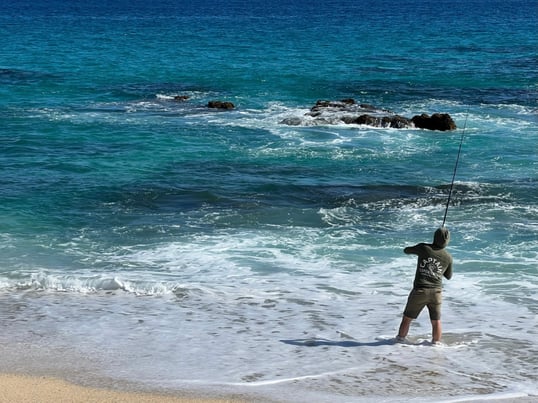
When we got back to the dock, my family headed back to the hotel but I jumped in a cab and headed straight for Jansen’s Inshore Tackle. As I walked up to the store, a man carrying boxes entered just before I reached the door. After a few minutes of browsing, I struck up a conversation with the guy who turned out to be Stephen Jansen, the owner.
Cabo San Lucas Surf Fishing Target Species
During my conversations with Mario and Stephen about inshore fishing, I quickly realized the impressive line up of species lurking just beyond the sand. The most common fish anglers target in Cabo is the roosterfish. Their large tapered bodies, beautiful coloration, and distinct seven-spined comb sets them apart from virtually every other fish on earth. These fish are explosive inshore predators which puts them on almost every bucket list causing anglers to travel across the globe to catch one.
The most unexpected species on the list were dorado (mahi mahi) and kingfish. These fish are typically regarded as offshore or nearshore predators by most anglers but at the right time, they can be caught on the beach in Cabo. The steep shoreline put deep water within reach and coral rock piles hold the bait these fish are after. This perfect combination pulls these pelagic species close to the beach.
The rest of the fish that can be targeted from the beach may not be as impressive compared to the three species previously mentioned, but I would argue they are still more stout than most of the inshore fish we are familiar with in the U.S. There are several species of grouper and snapper that live in the surf. The cubera snapper is the largest species of snapper and also happens to be one of the resident predators in the Cabo Surf. one of the most common species in the surf is the jack crevalle. These fish are called “toro” by the locals which means bull in Spanish and makes sense the instant you hook into one.
When you think of snook visions of Florida and maybe even the South Texas Coast is likely what comes to mind. If the list of fish to catch wasn’t potent enough, Cabo is also home to two species of Pacific snook. The black and white snook can reach lengths over three feet and four feet long respectively and both top out around 60 pounds.
Once I got back to my hotel with a pile of new gear I was still shocked at the variety and size of fish that were available while fishing from the beach. If inshore fishing is your sport of choice, Cabo San Lucas is the big leagues.
What is a Surf Rod
Surf rods are basically a super-sized setup made for throwing bait or lures far beyond the sand and waves. The rod itself is typically between eight to sixteen feet long which gives anglers more speed on their cast. The power comes from the action of the rod which is balanced between stiffness and flex. The stiffness makes it possible to catch large fish and the flexibility allows the use of heavier baits. Spinning reels are most common on surf fishing setups due to their ability to make longer casts. However, conventional reels also make an appearance when strength is a top priority.
Learning to Cast a Surf Rod
After purchasing two ten-foot surf rods from Jansen’s Inshore Tackle, I went back to the hotel and immediately headed for the beach. The huge rods are much heavier than typical inshore or freshwater tackle which may be obvious but it definitely added to the learning curve. The reels came spooled with forty-pound braid to which I tied a thirty-pound monofilament leader with a snap swivel on the end. The Cabo Killer is a lure that weighs three ounces, and the Killer Popper weighs two ounces.
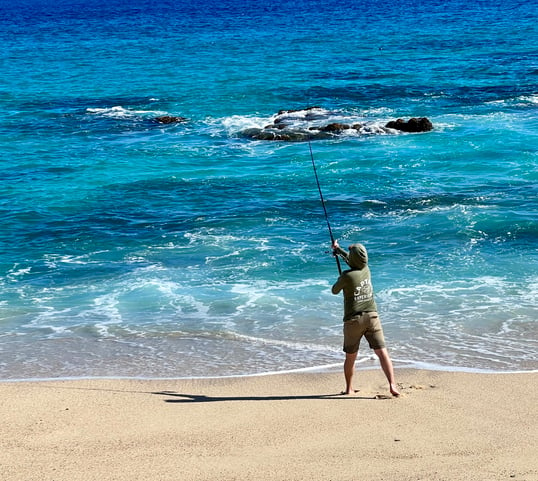
These heavy lures being swung on the end of a ten-foot rod generate a ton of power which results in unbelievable casting distance if done properly. For me though, it resulted in the braid sawing into my pointer finger that held the line during the cast. Stephen was kind enough to throw in a special one-finger glove designed specifically for this issue but in my haste, I forgot it on the table.
After retrieving the special glove I started back on learning how to cast. When casting with light tackle it feels like either a fast whip or a quick snap which sends the small lures hurling across the water. With three extra feet of rod and lures that are twice the size, the wind-up of building flex in the rod takes an unnatural amount of time. The key was to use my entire body to swing the rod 180 degrees around me using progressively more force as the rod flexed. The resulting cast felt like a long whip of the rod which built up flex followed by explosive snapping action when the flex fired the lure 100 yards off the beach.
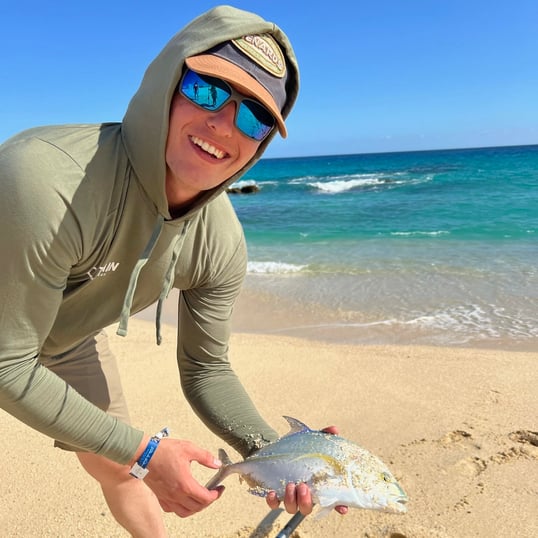
Final Tally
At the end of my trip I had hit the beach on three separate occasions to learn this new cumbersome craft and of course, try to catch some fish. I covered some ground and water trying to learn everything at once. In the end, I had feet that were raw on the bottom and burned cherry red on top, and hands that were cut by braid, hooks, and teeth. My arms could barely carry the rods and tackle back to the room. Who would’ve thought that casting big heavy lures on a big heavy rod was immensely exhausting? All of my efforts produced four jacks and allowed me to coach my brother-in-law enough that he was able to catch a trumpet fish. The most profound discovery of my surf fishing adventure is I wake up and yearn to crush sand and hurl lures. You can be sure I’ll be back.
Joey Butrus
Updated on July 28, 2023

January 19, 2021

March 8, 2022
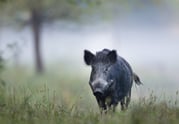
November 7, 2023

August 21, 2023

June 22, 2022
Related Articles
June 20, 2024
April 10, 2022
Featured Locations
- Fishing Charters Near Me
- Austin Fishing Guides
- Biloxi Fishing Charters
- Bradenton Fishing Charters
- Cabo San Lucas Fishing Charters
- Cancun Fishing Charters
- Cape Coral Fishing Charters
- Charleston Fishing Charters
- Clearwater Fishing Charters
- Corpus Christi Fishing Charters
- Crystal River Fishing Charters
- Dauphin Island Fishing Charters
- Daytona Beach Fishing Charters
- Destin Fishing Charters
- Fort Lauderdale Fishing Charters
- Fort Myers Fishing Charters
- Fort Walton Beach Fishing Charters
- Galveston Fishing Charters
- Gulf Shores Fishing Charters
- Hatteras Fishing Charters
- Hilton Head Fishing Charters
- Islamorada Fishing Charters
- Jacksonville Fishing Charters
- Jupiter Fishing Charters
- Key Largo Fishing Charters
- Key West Fishing Charters
- Kona Fishing Charters
- Lakeside Marblehead Fishing Charters
- Marathon Fishing Charters
- Marco Island Fishing Charters
- Miami Fishing Charters
- Montauk Fishing Charters
- Morehead City Fishing Charters
- Naples Fishing Charters
- New Orleans Fishing Charters
- New Smyrna Beach Fishing Charters
- Ocean City Fishing Charters
- Orange Beach Fishing Charters
- Panama City Beach Fishing Charters
- Pensacola Fishing Charters
- Pompano Beach Fishing Charters
- Port Aransas Fishing Charters
- Port Orange Fishing Charters
- Rockport Fishing Charters
- San Diego Fishing Charters
- San Juan Fishing Charters
- Sarasota Fishing Charters
- South Padre Island Fishing Charters
- St. Augustine Fishing Charters
- St. Petersburg Fishing Charters
- Tampa Fishing Charters
- Tarpon Springs Fishing Charters
- Venice Fishing Charters
- Virginia Beach Fishing Charters
- West Palm Beach Fishing Charters
- Wilmington Fishing Charters
- Wrightsville Beach Fishing Charters
